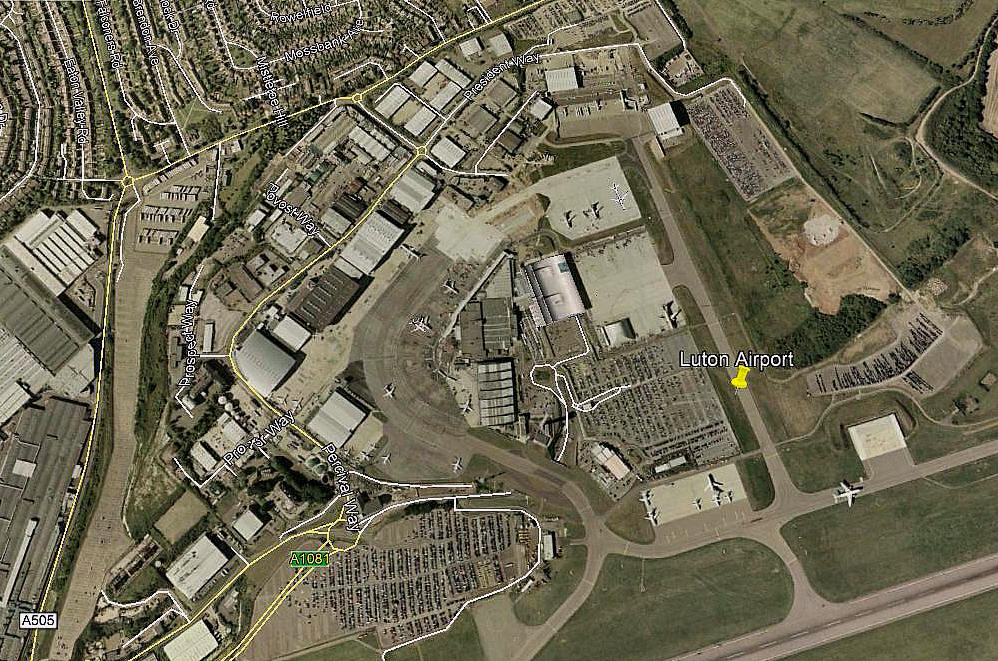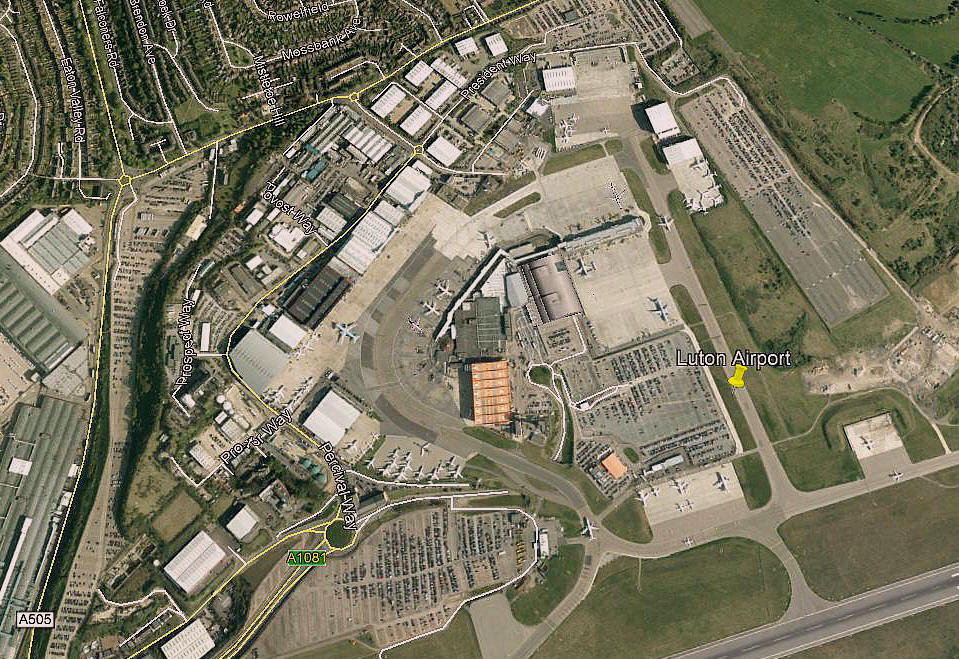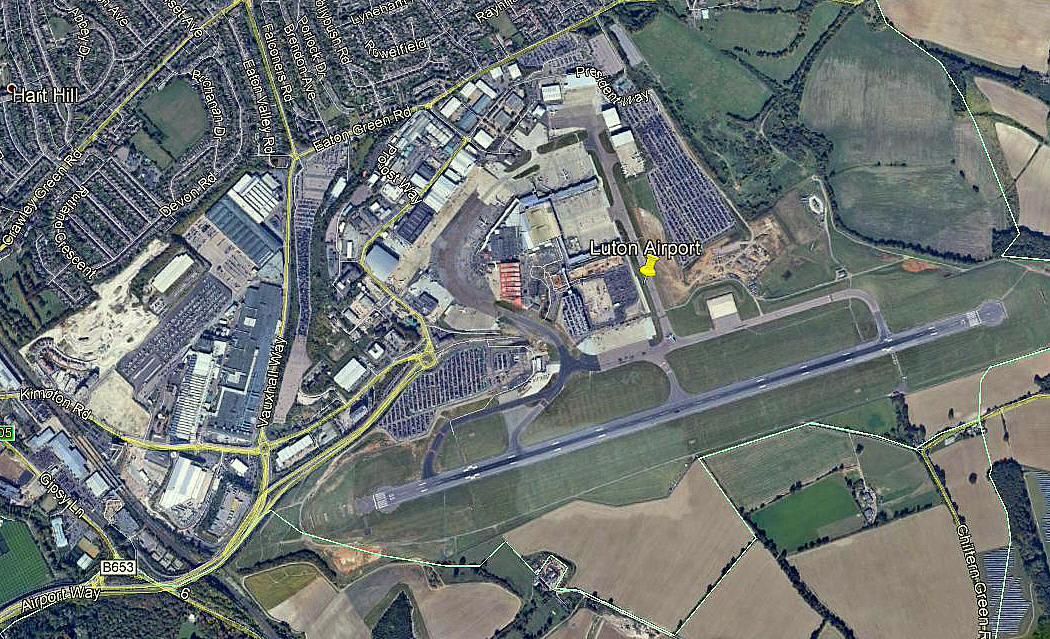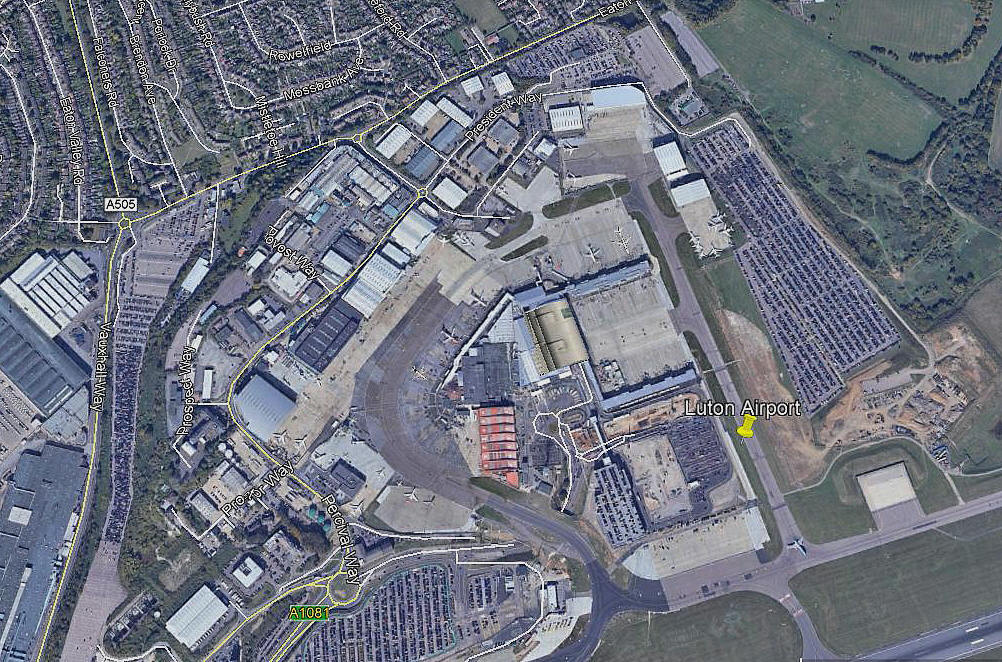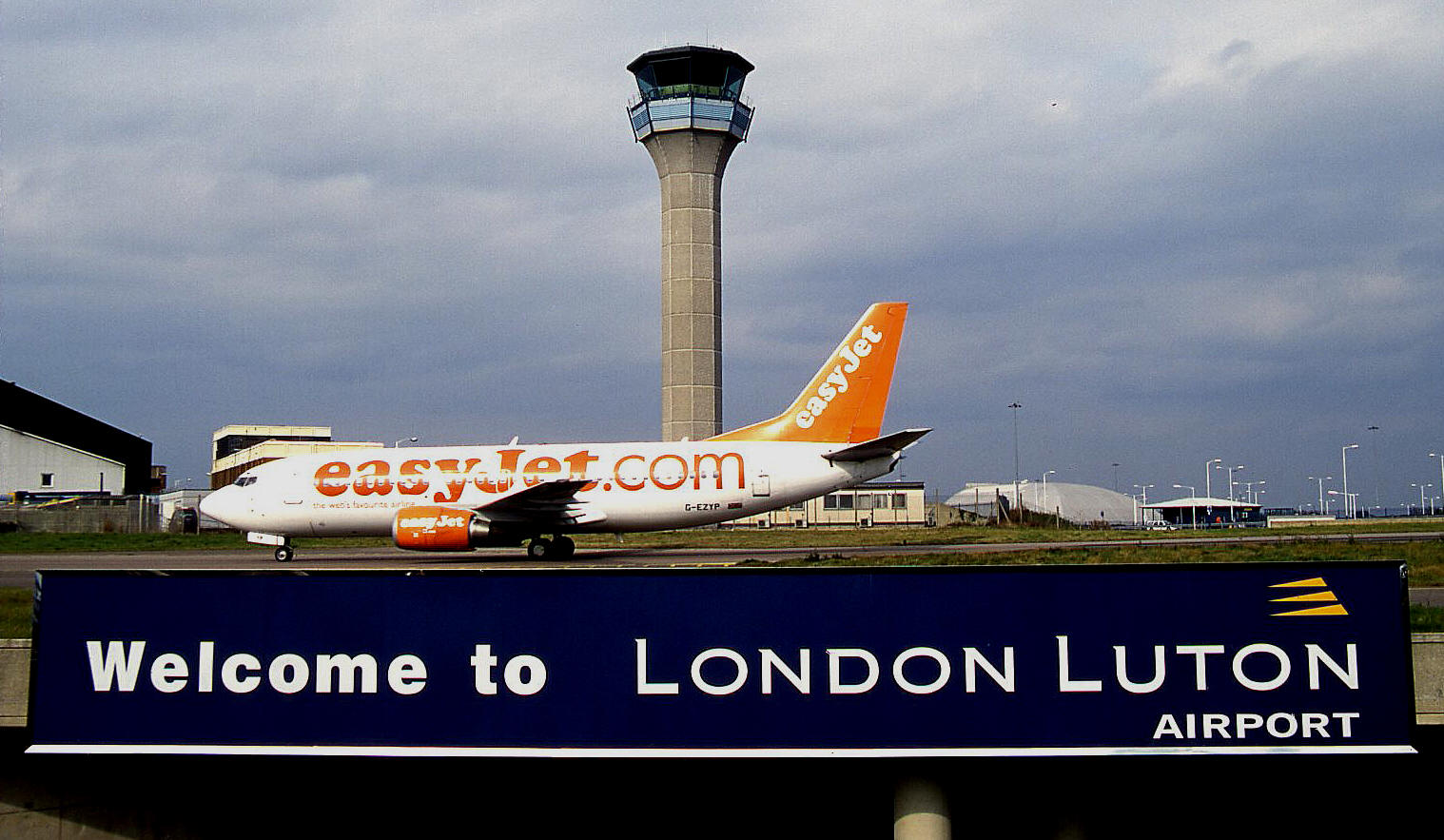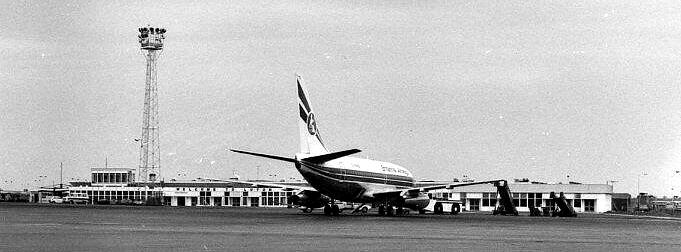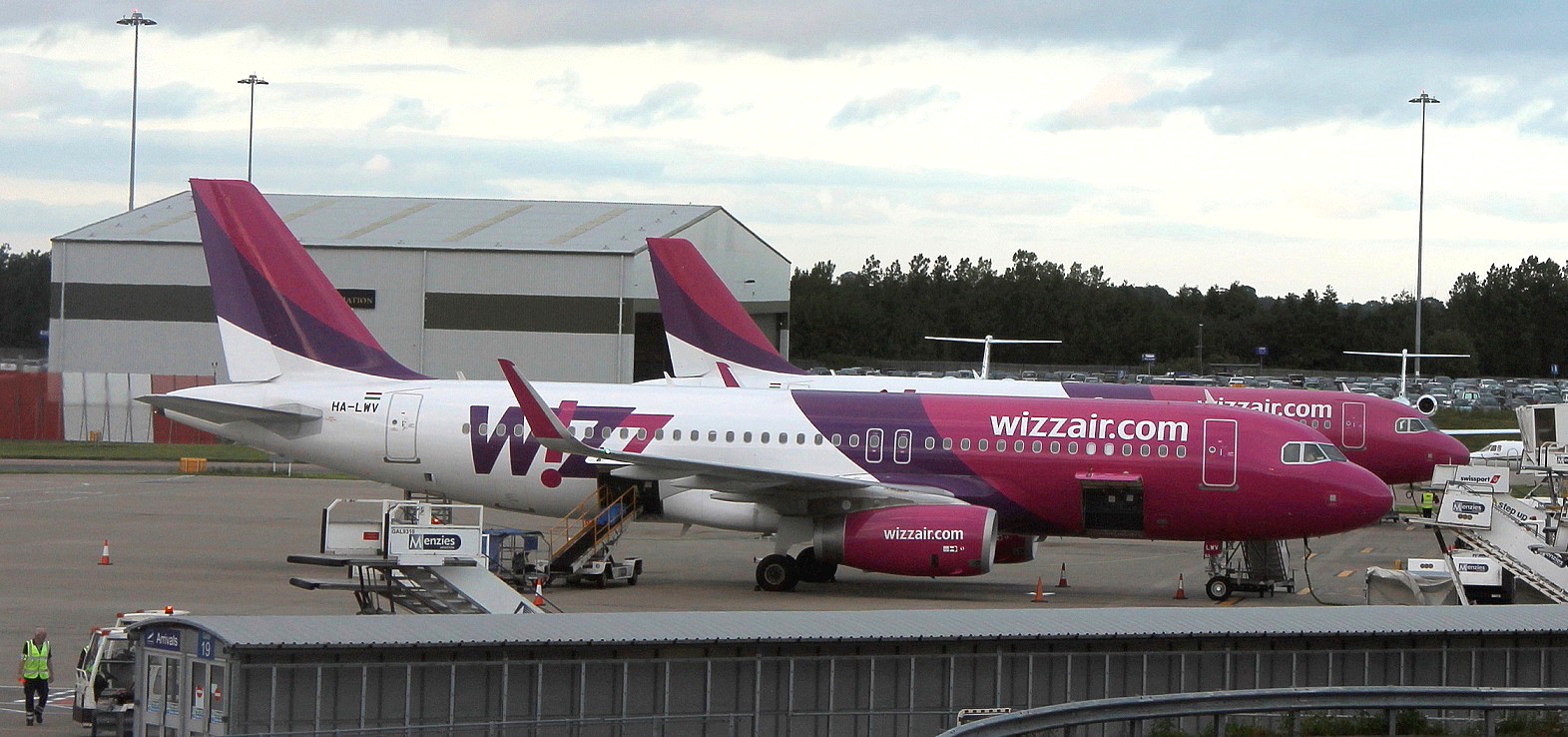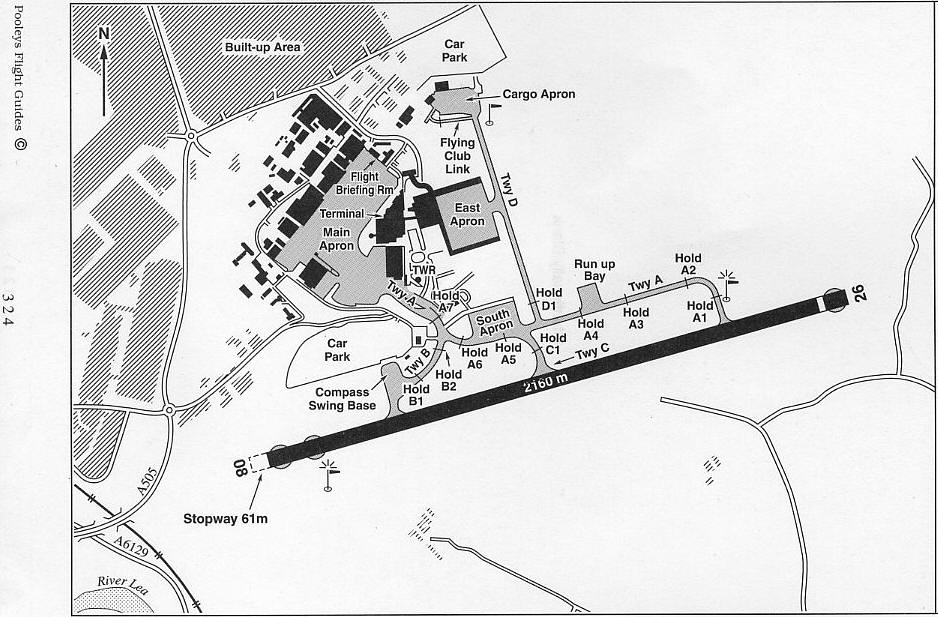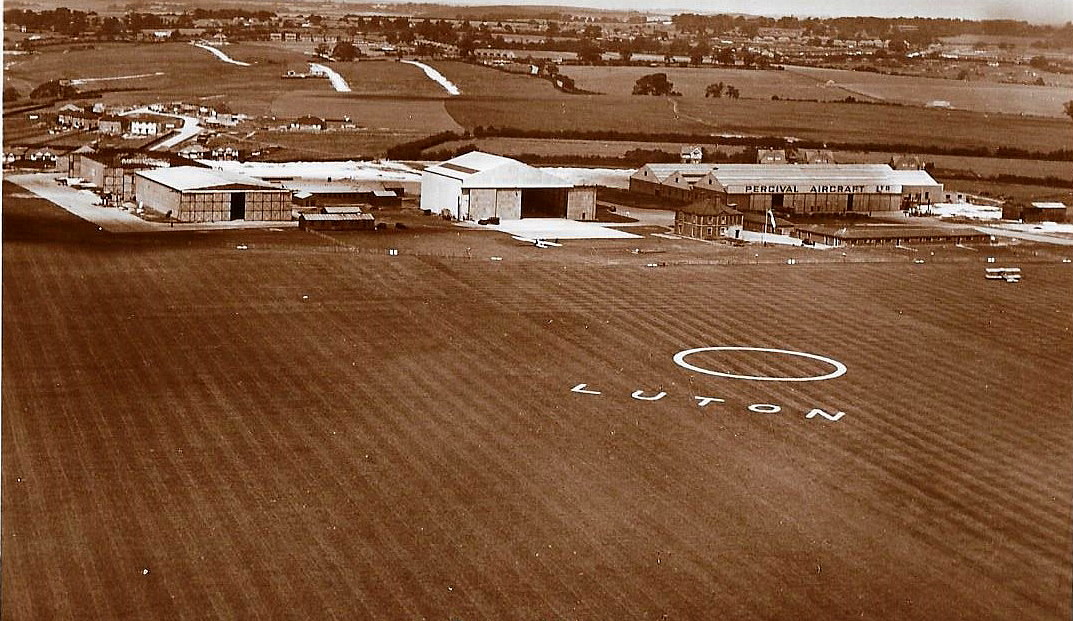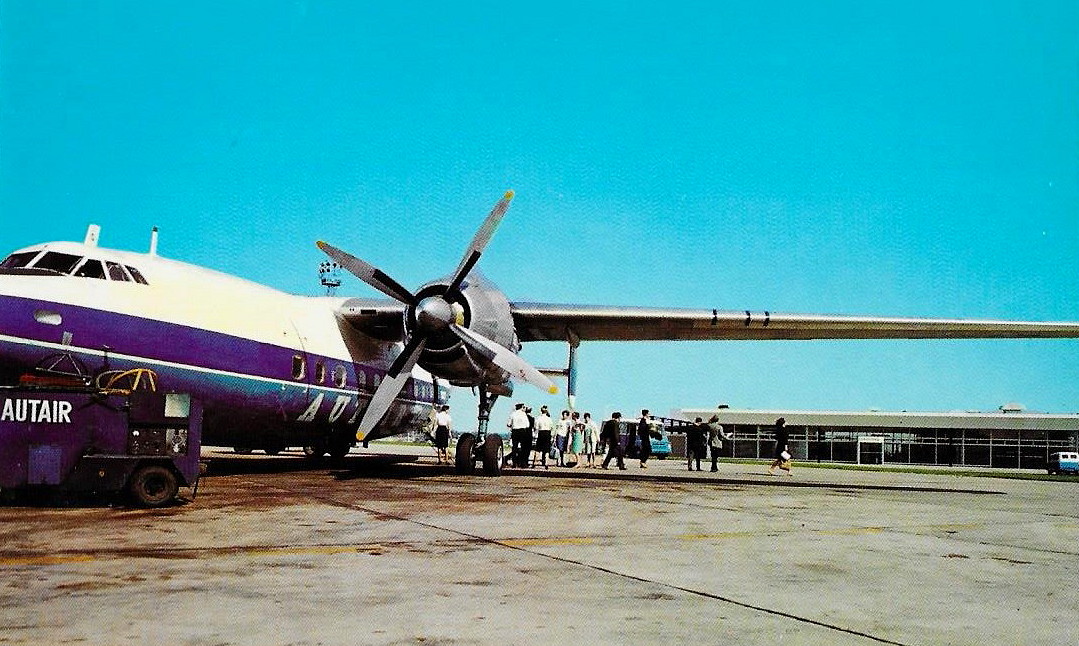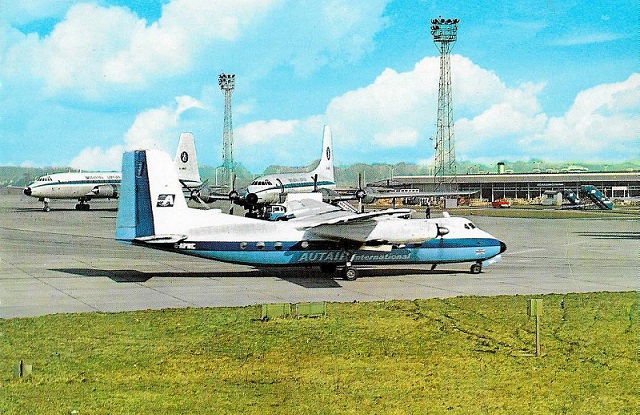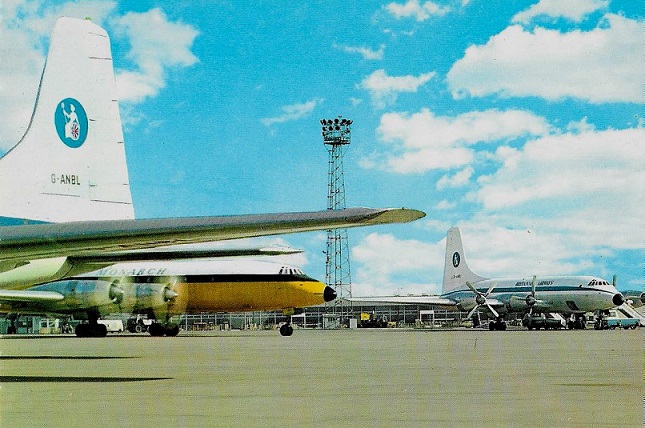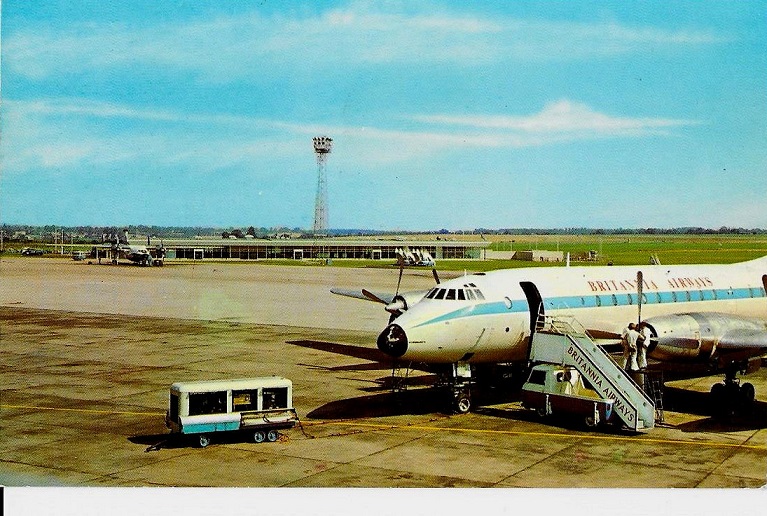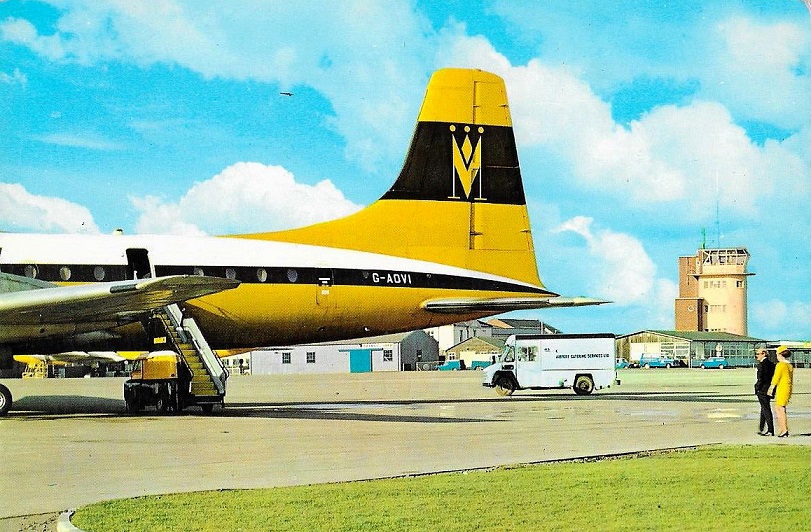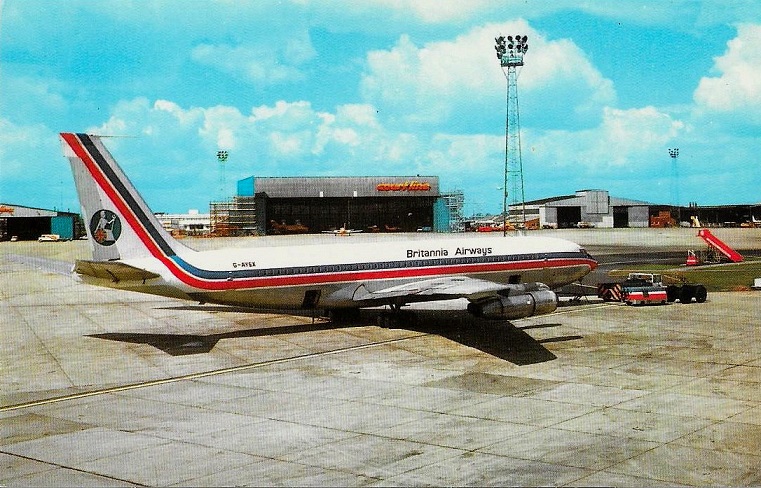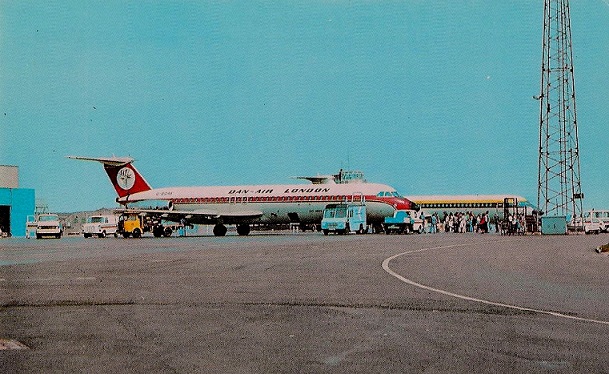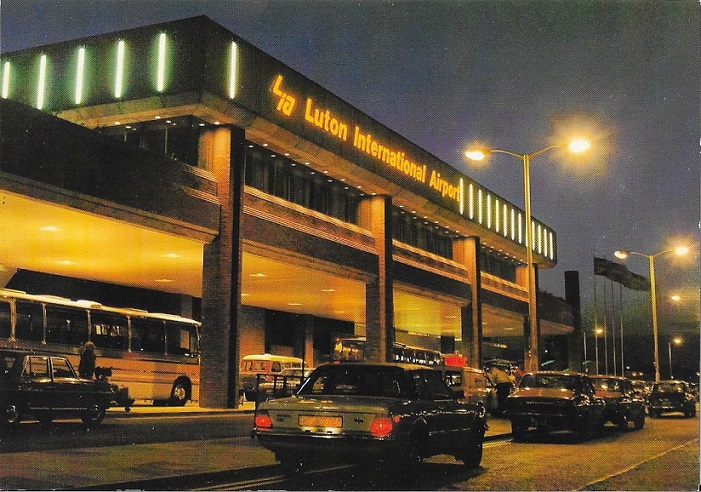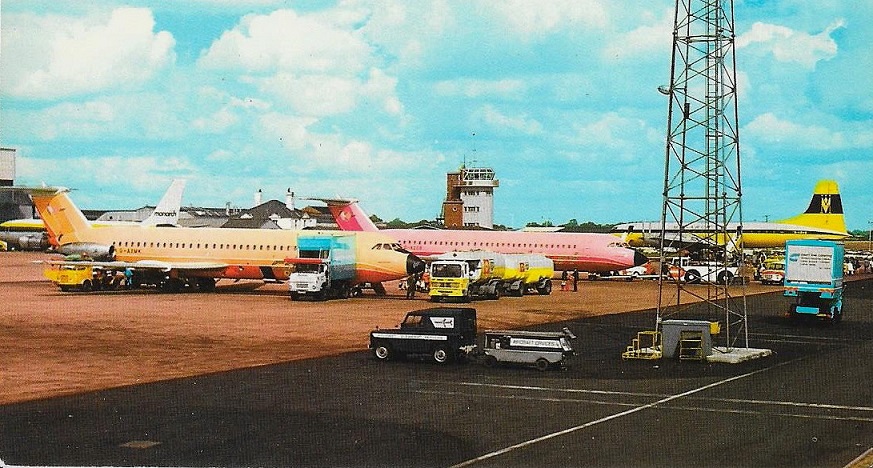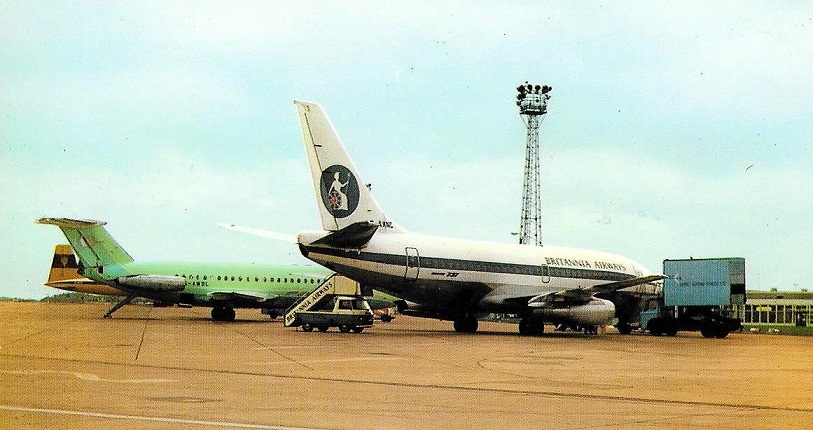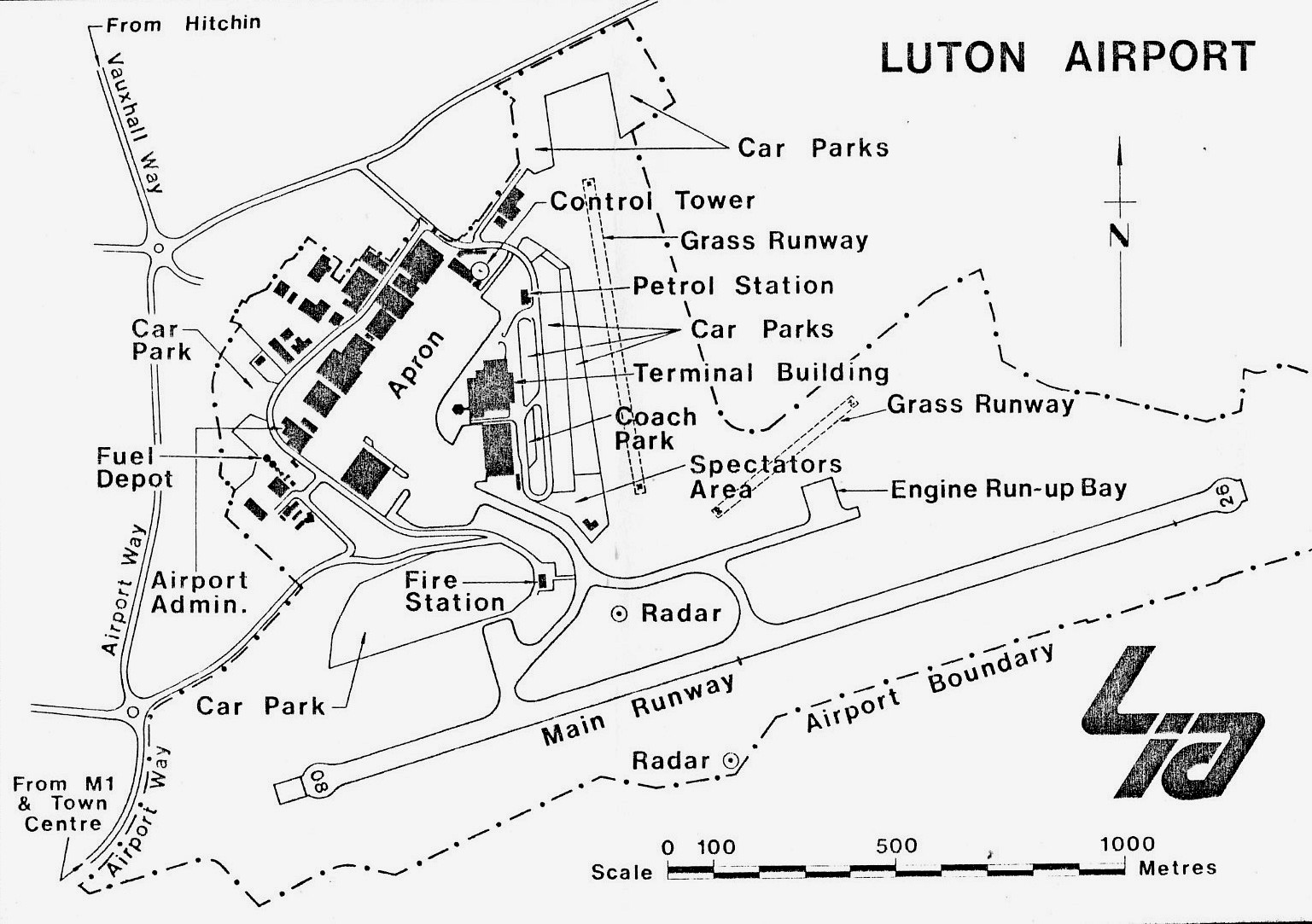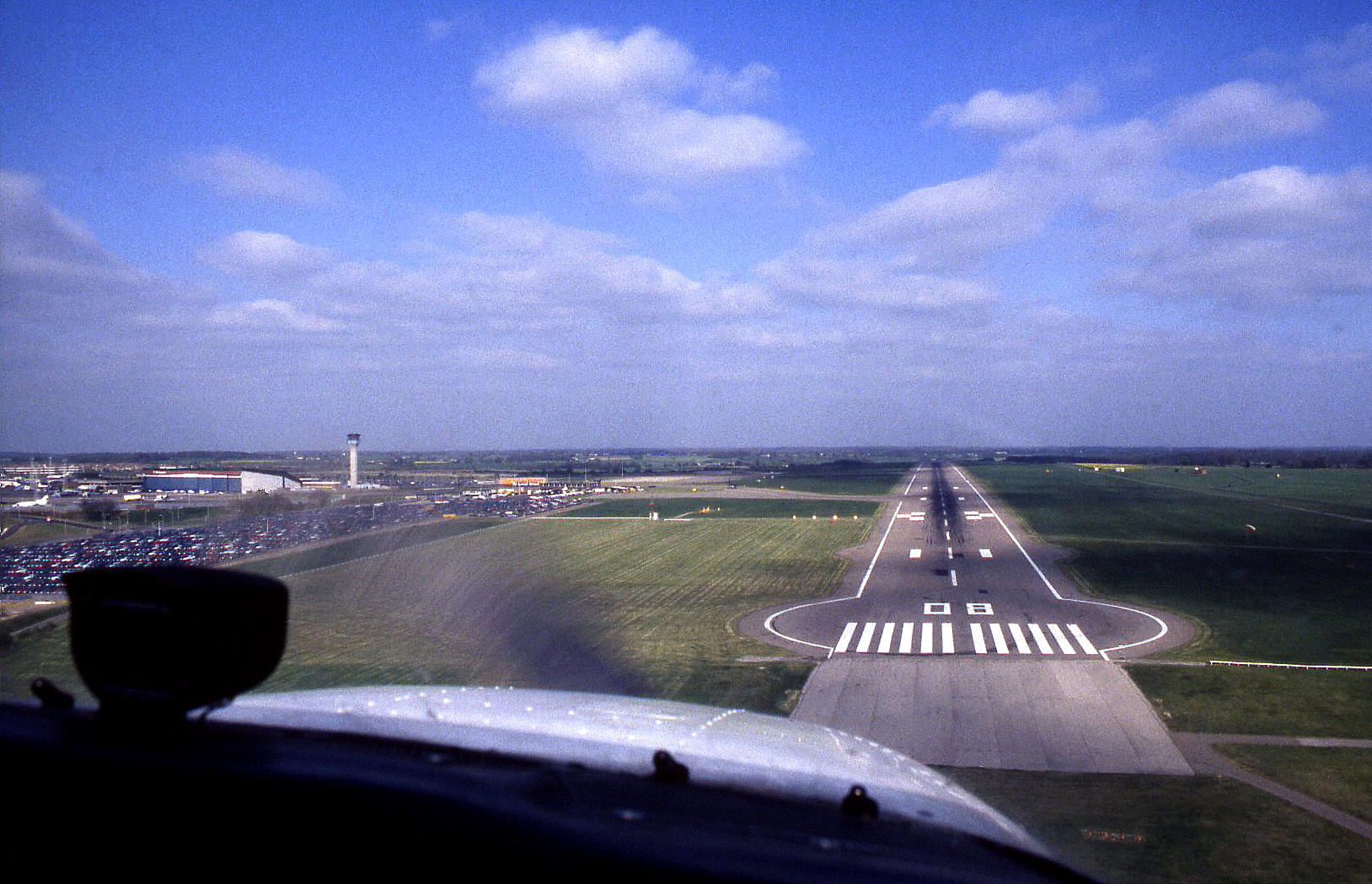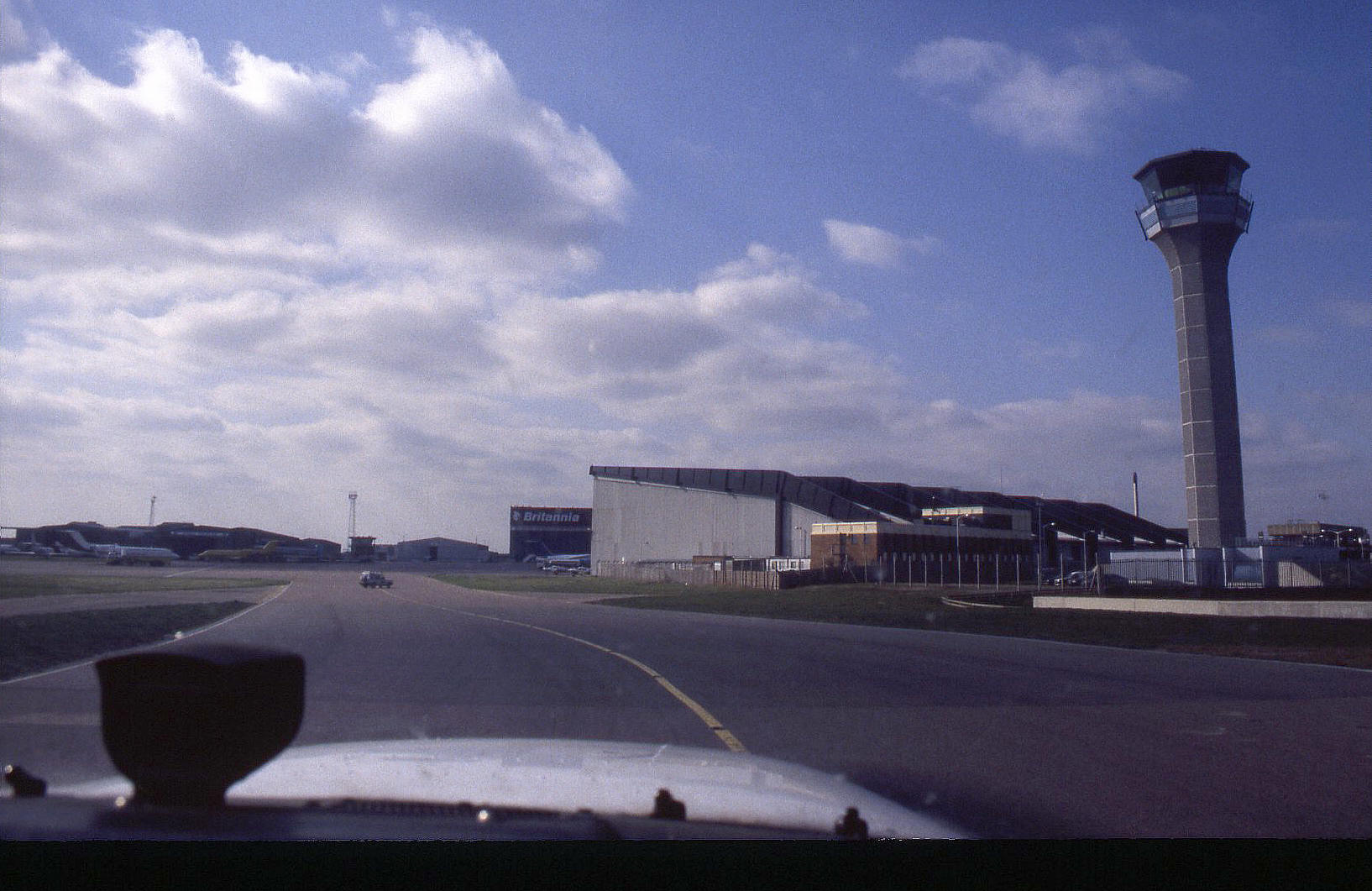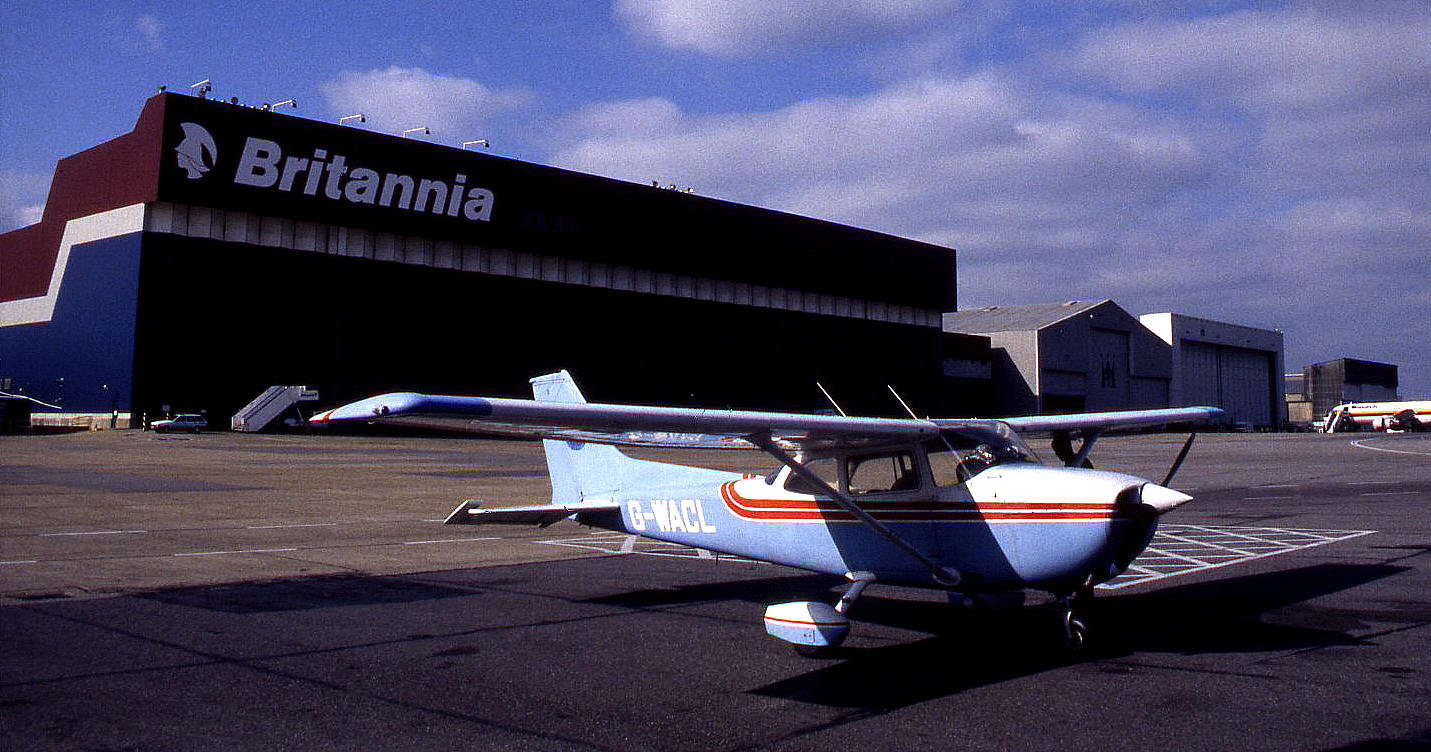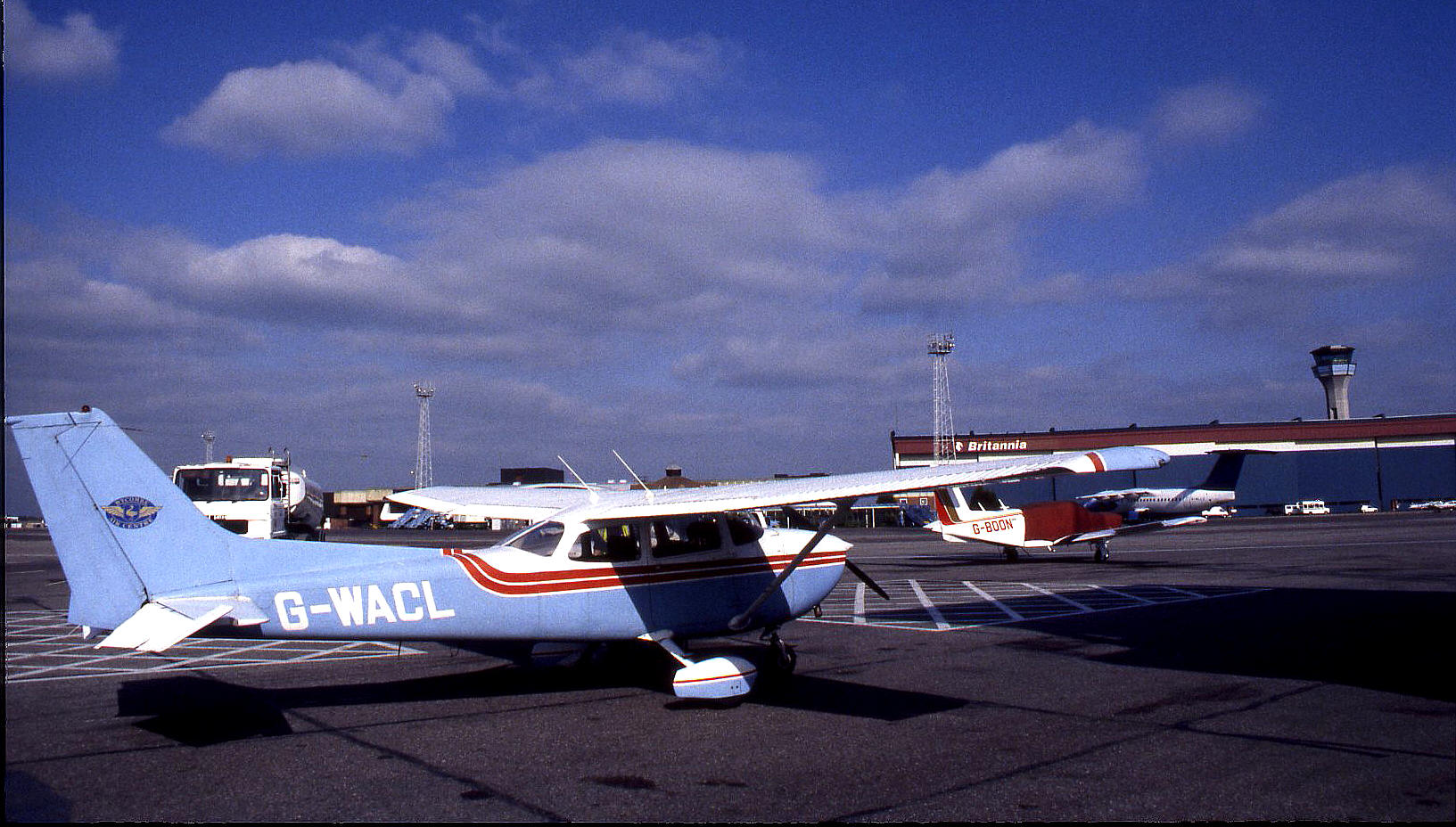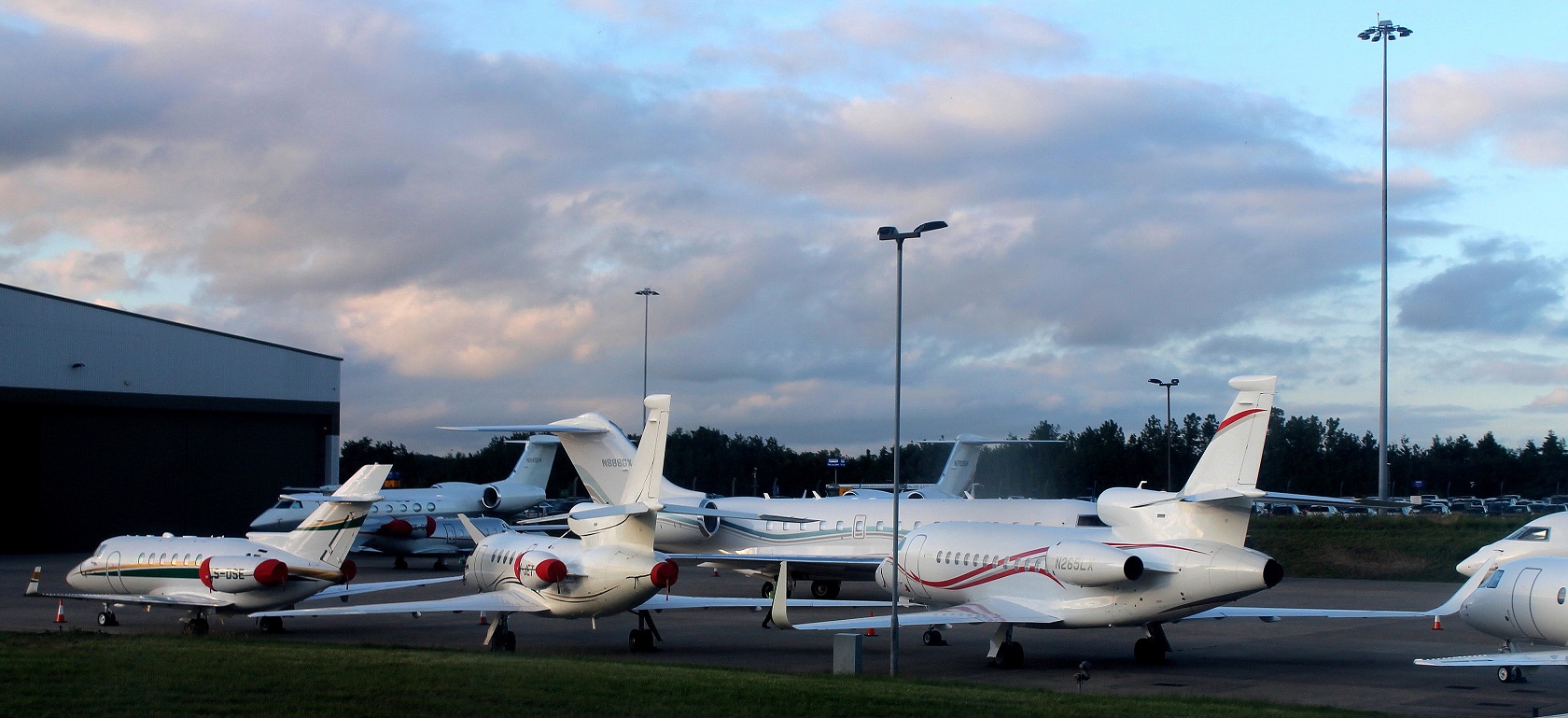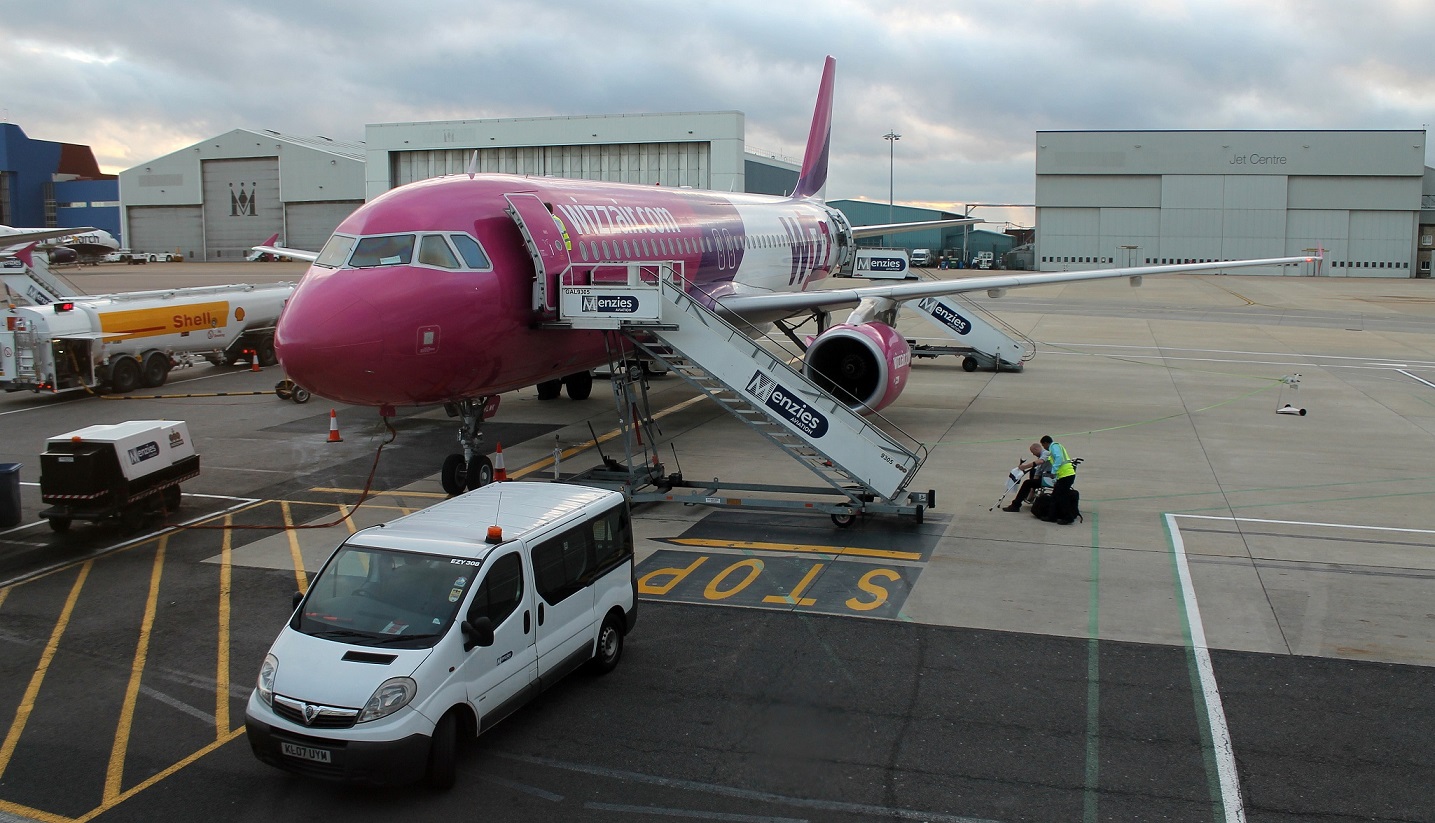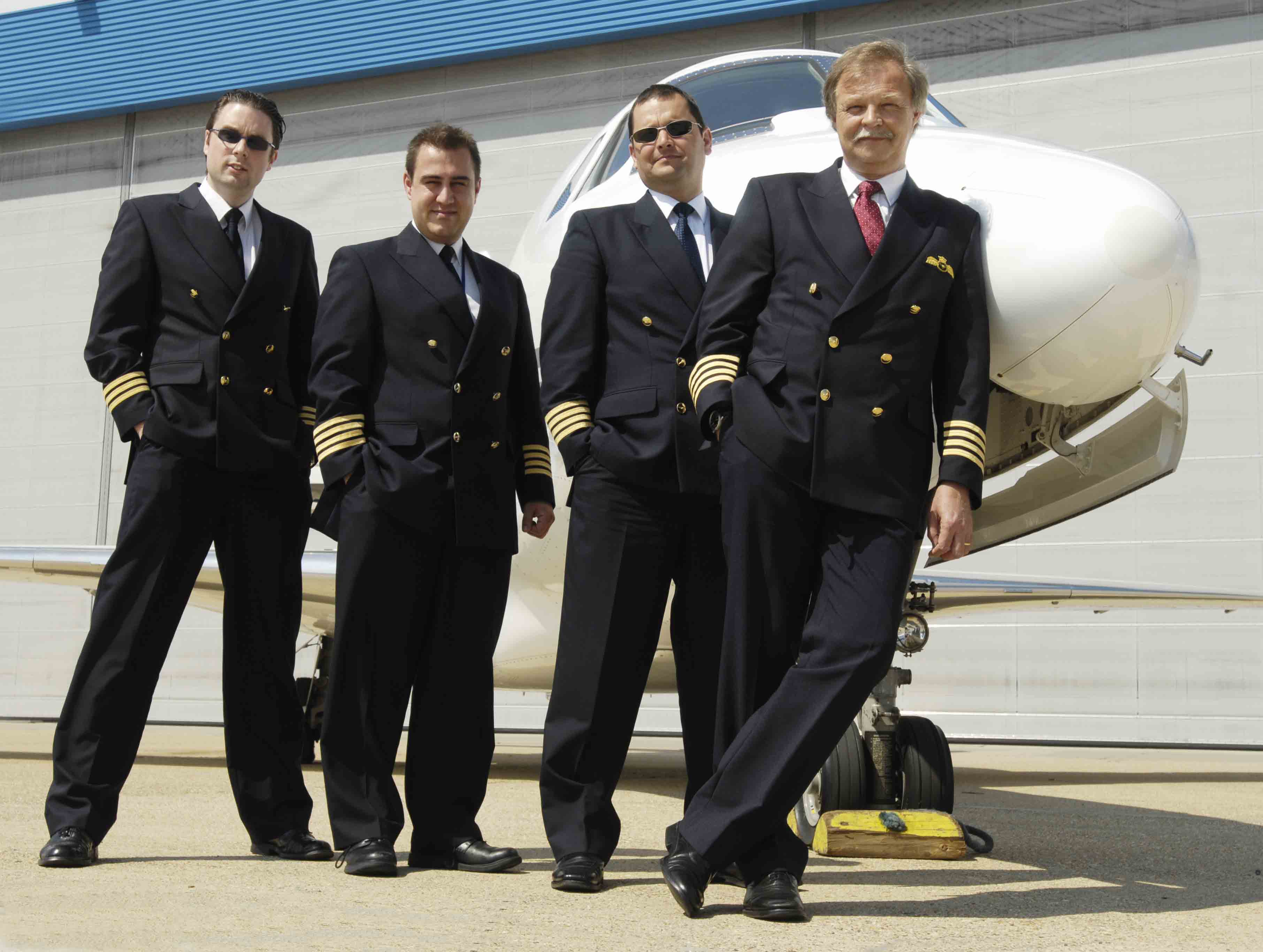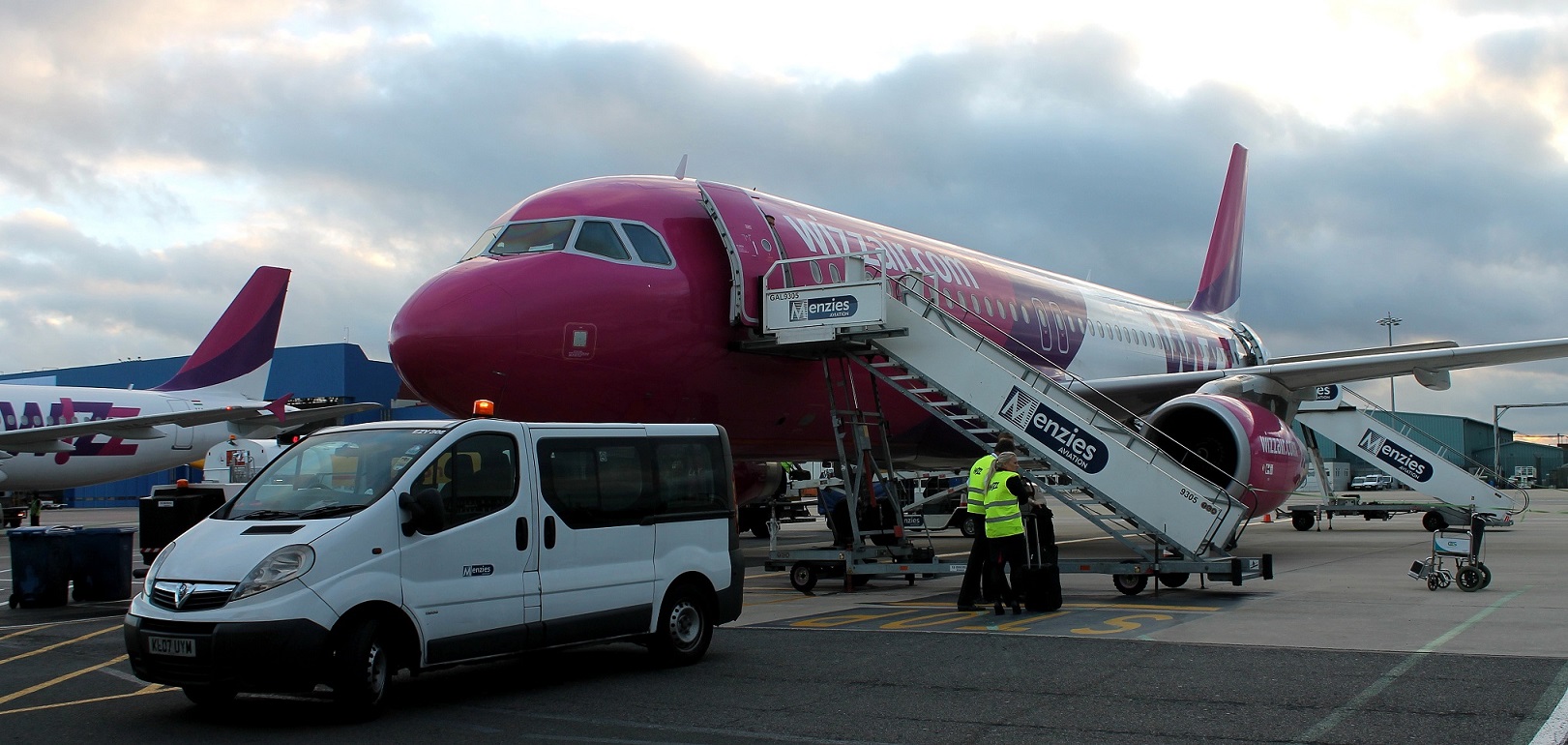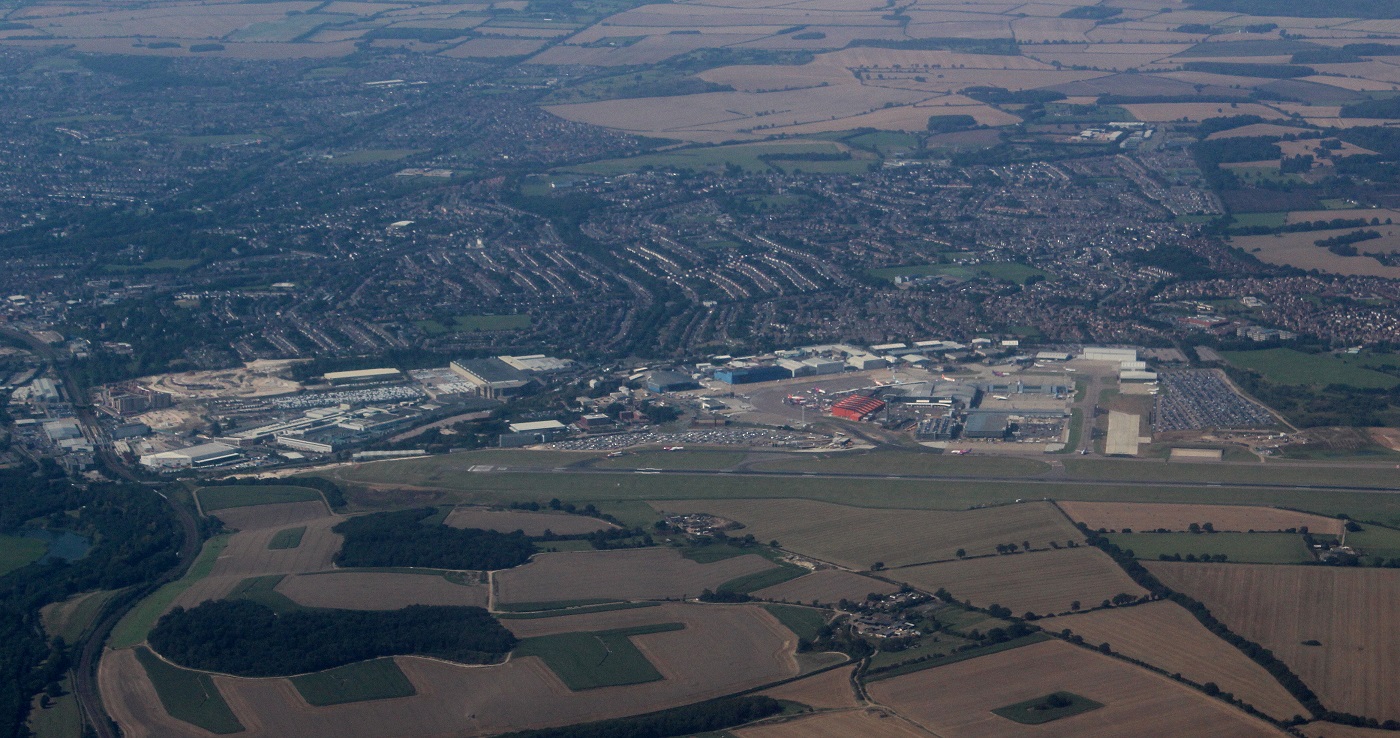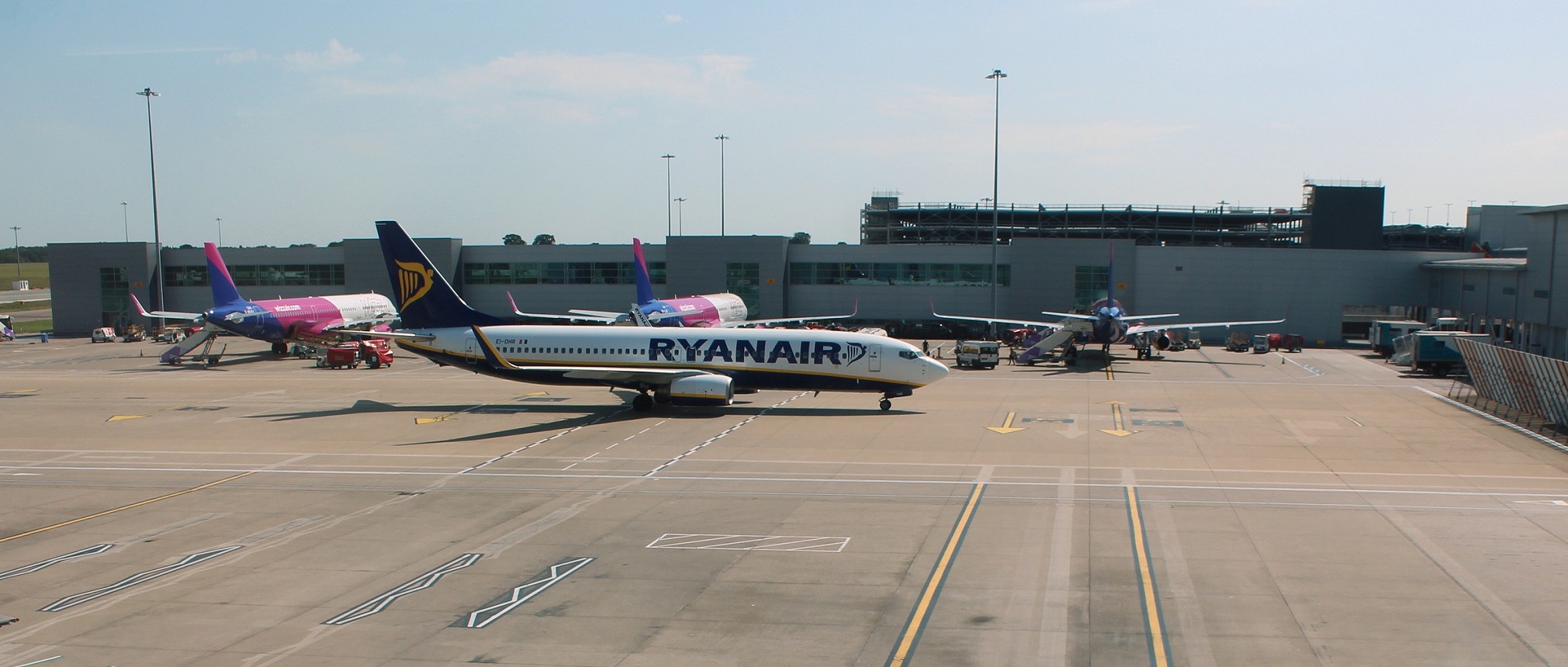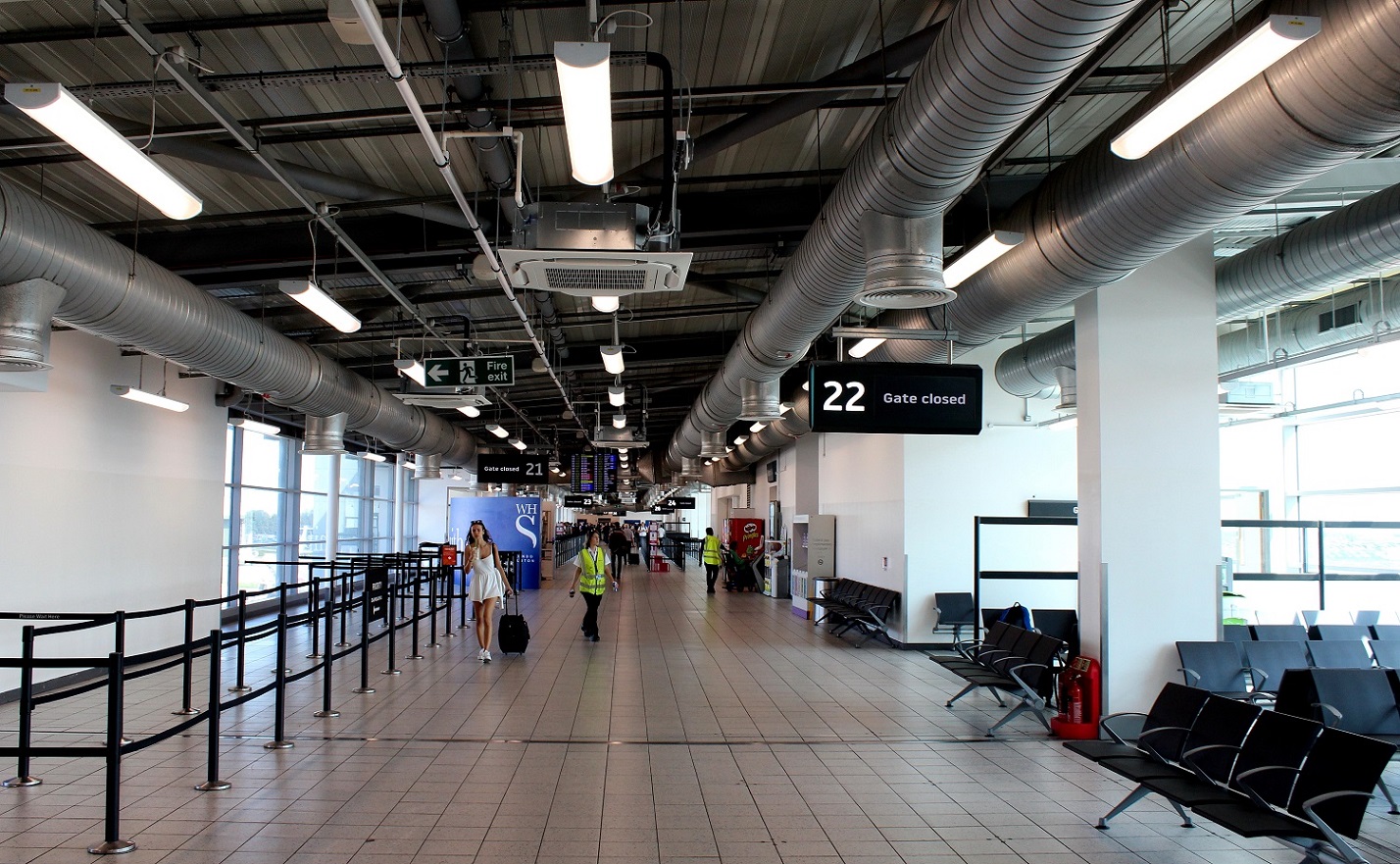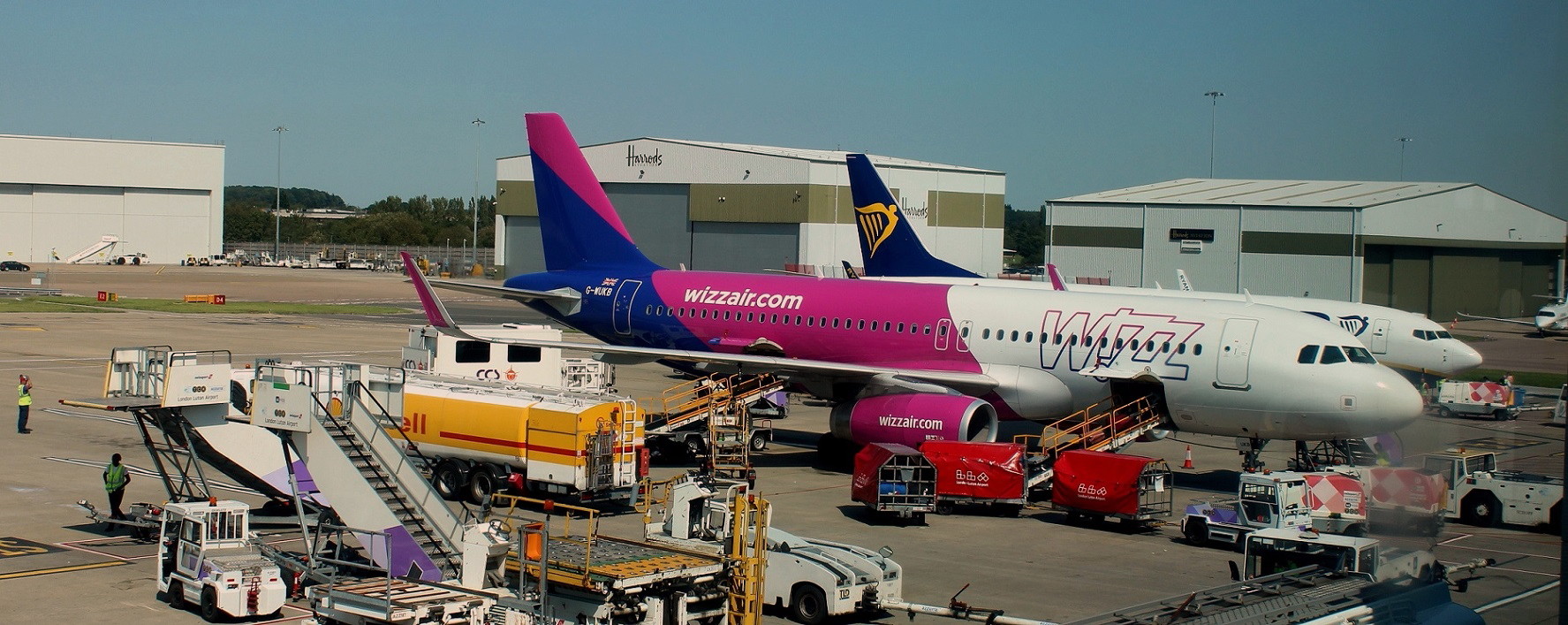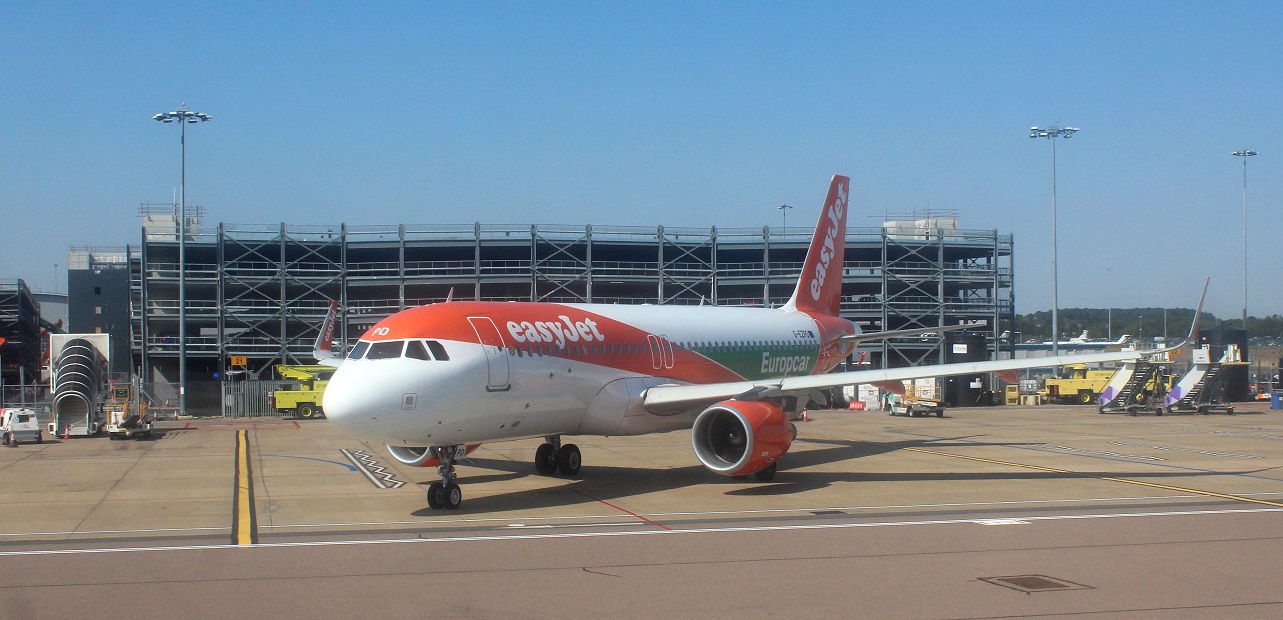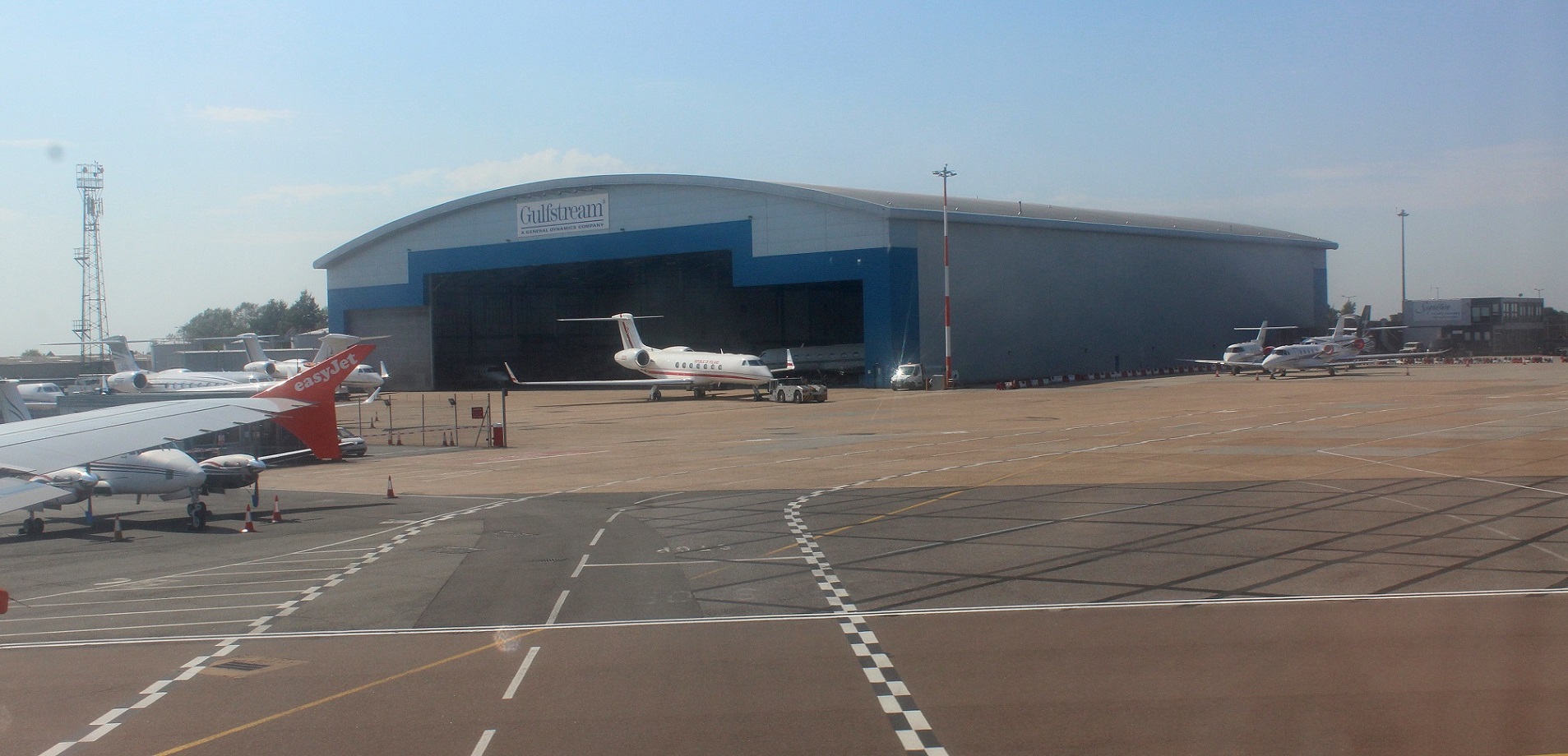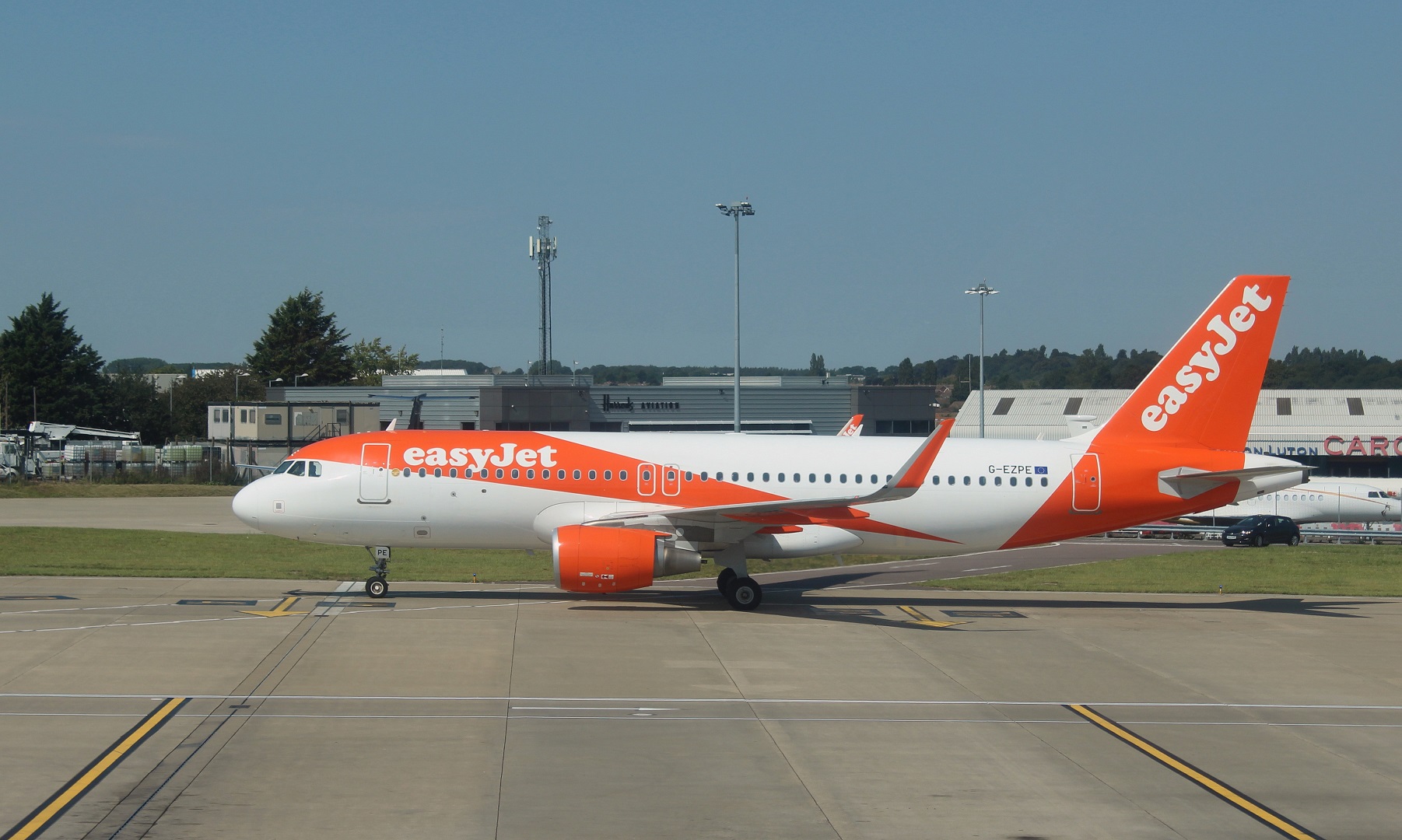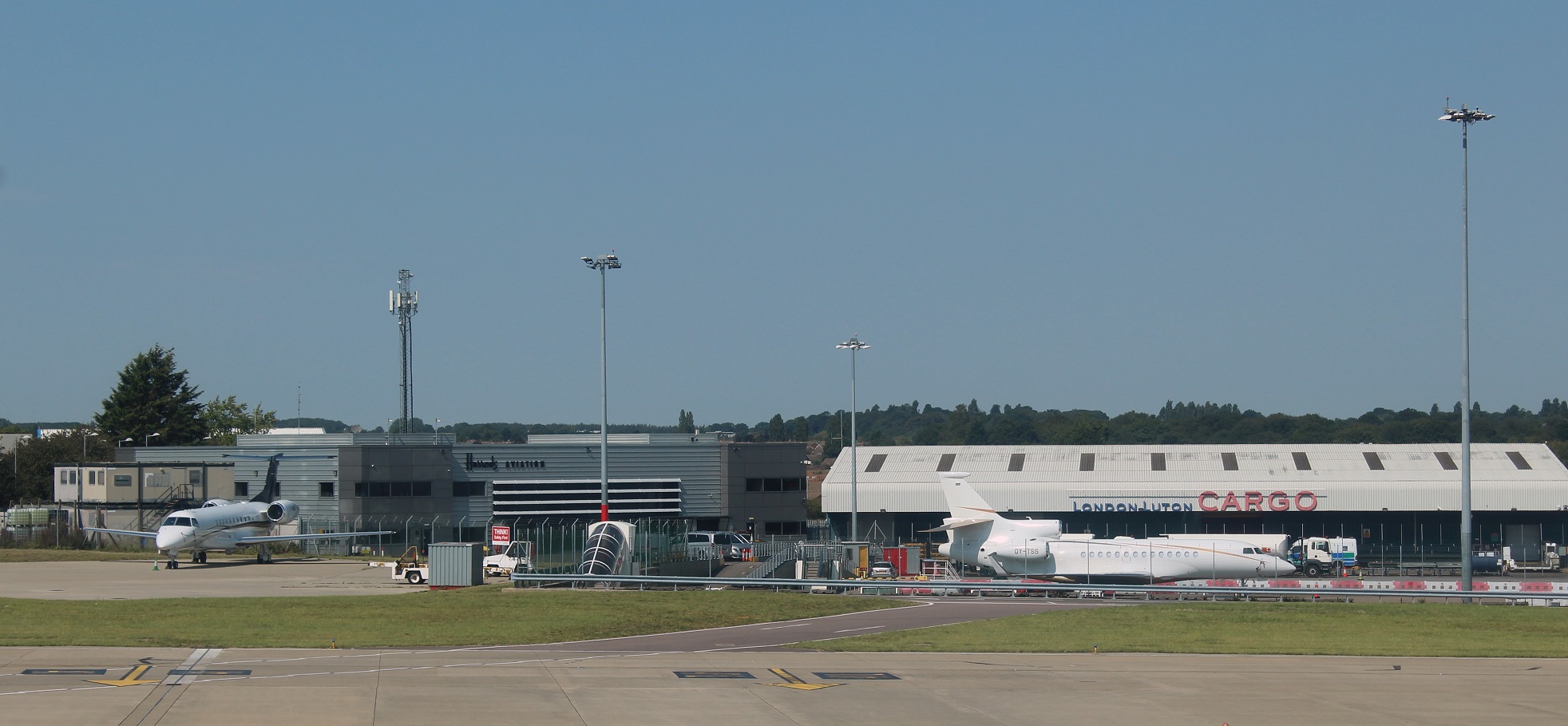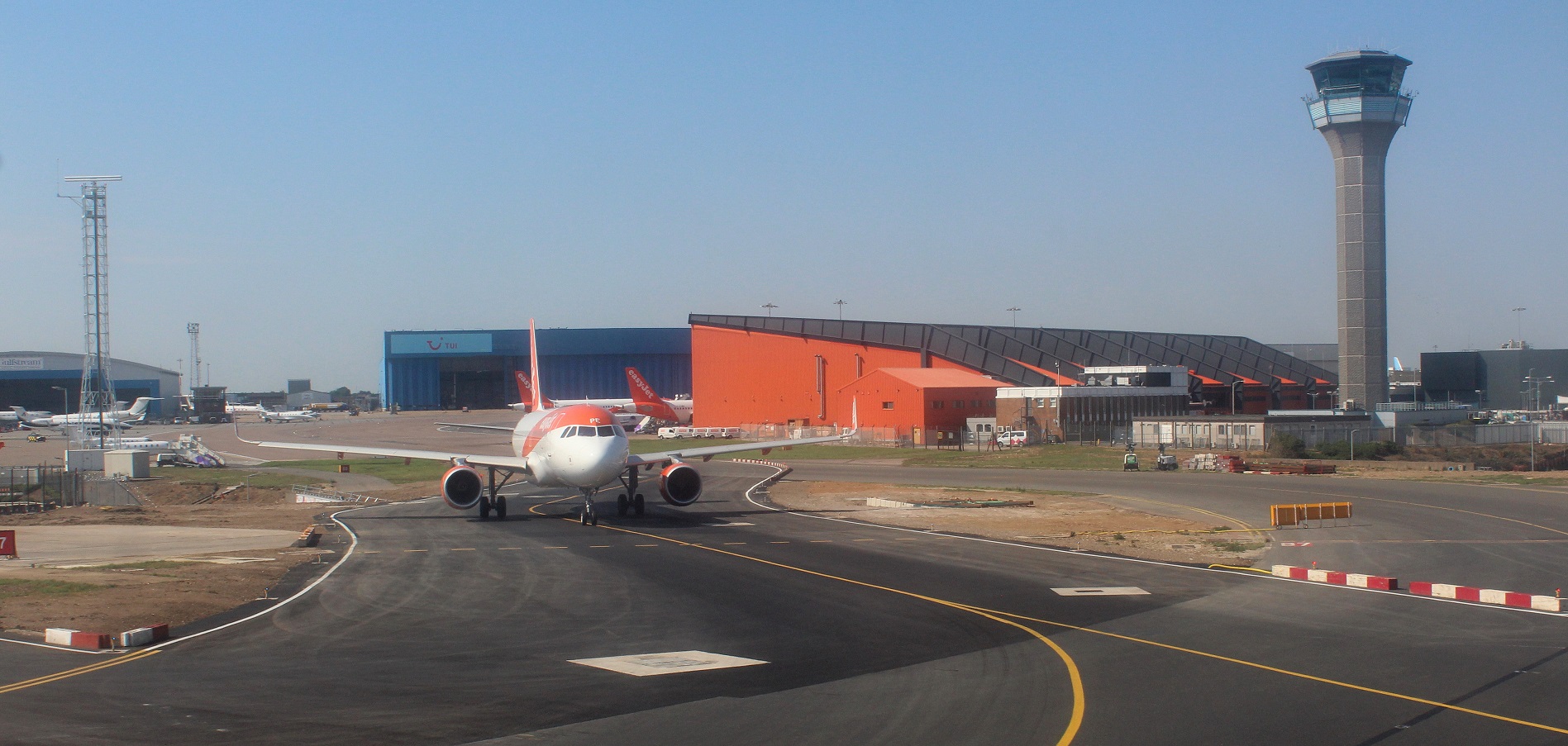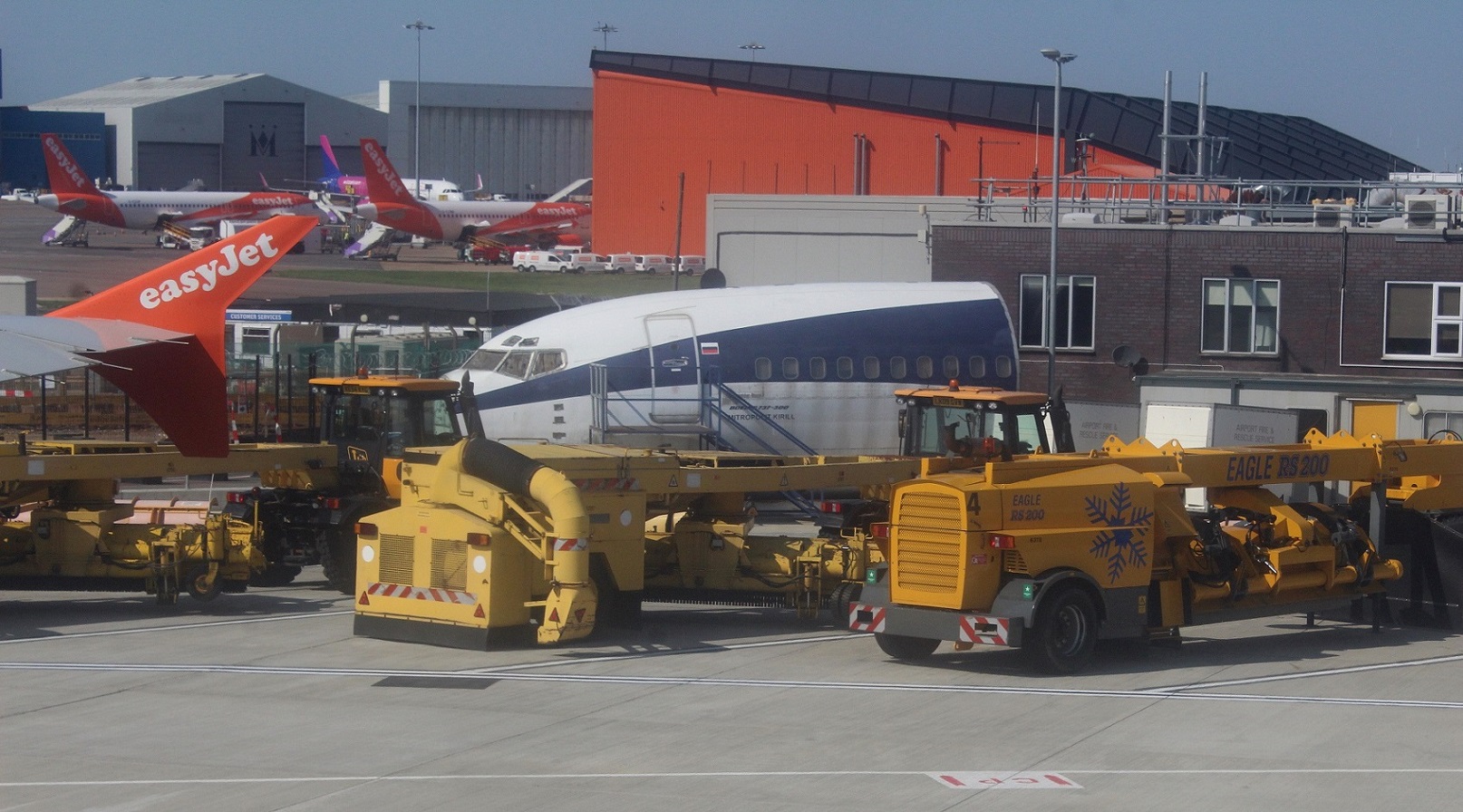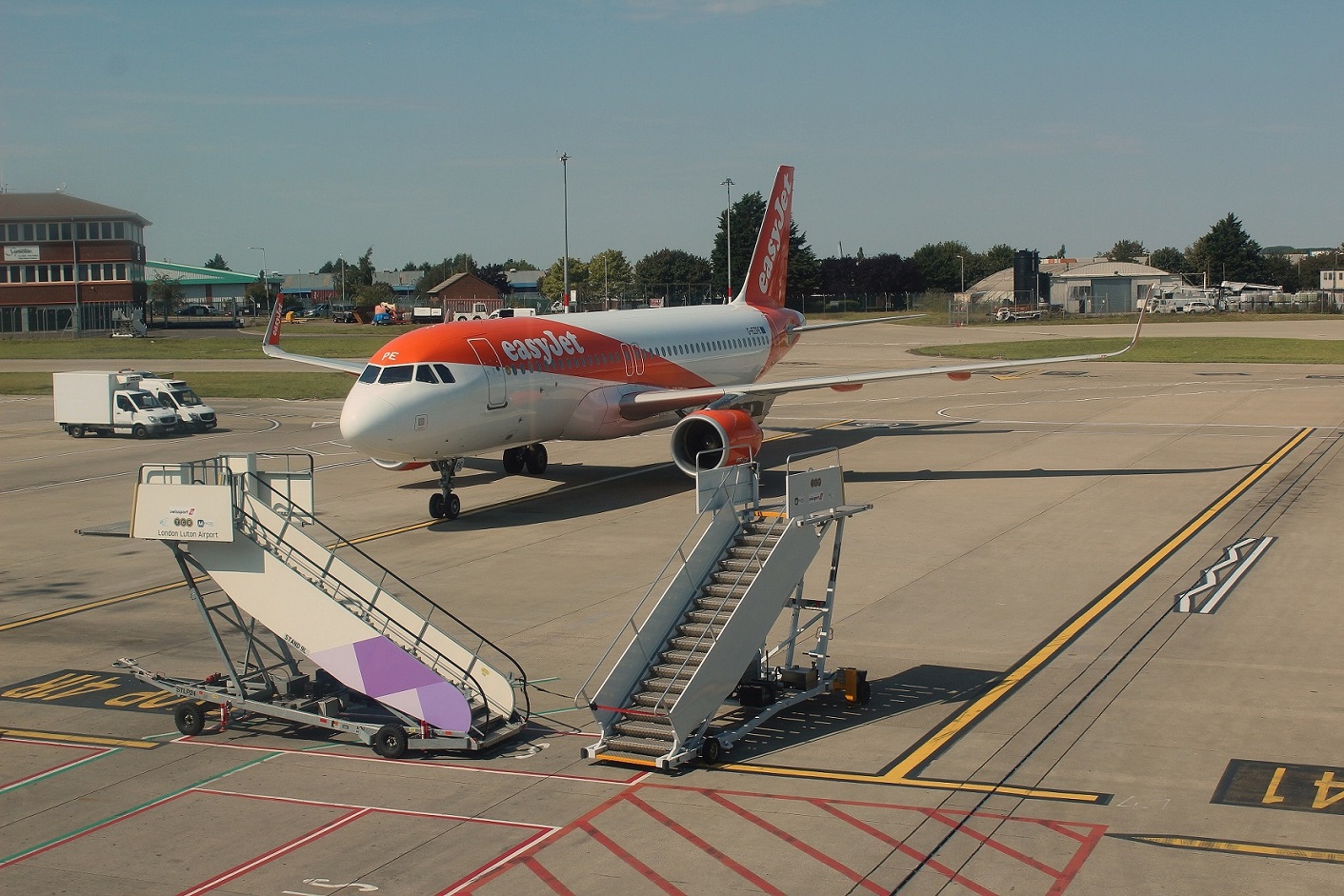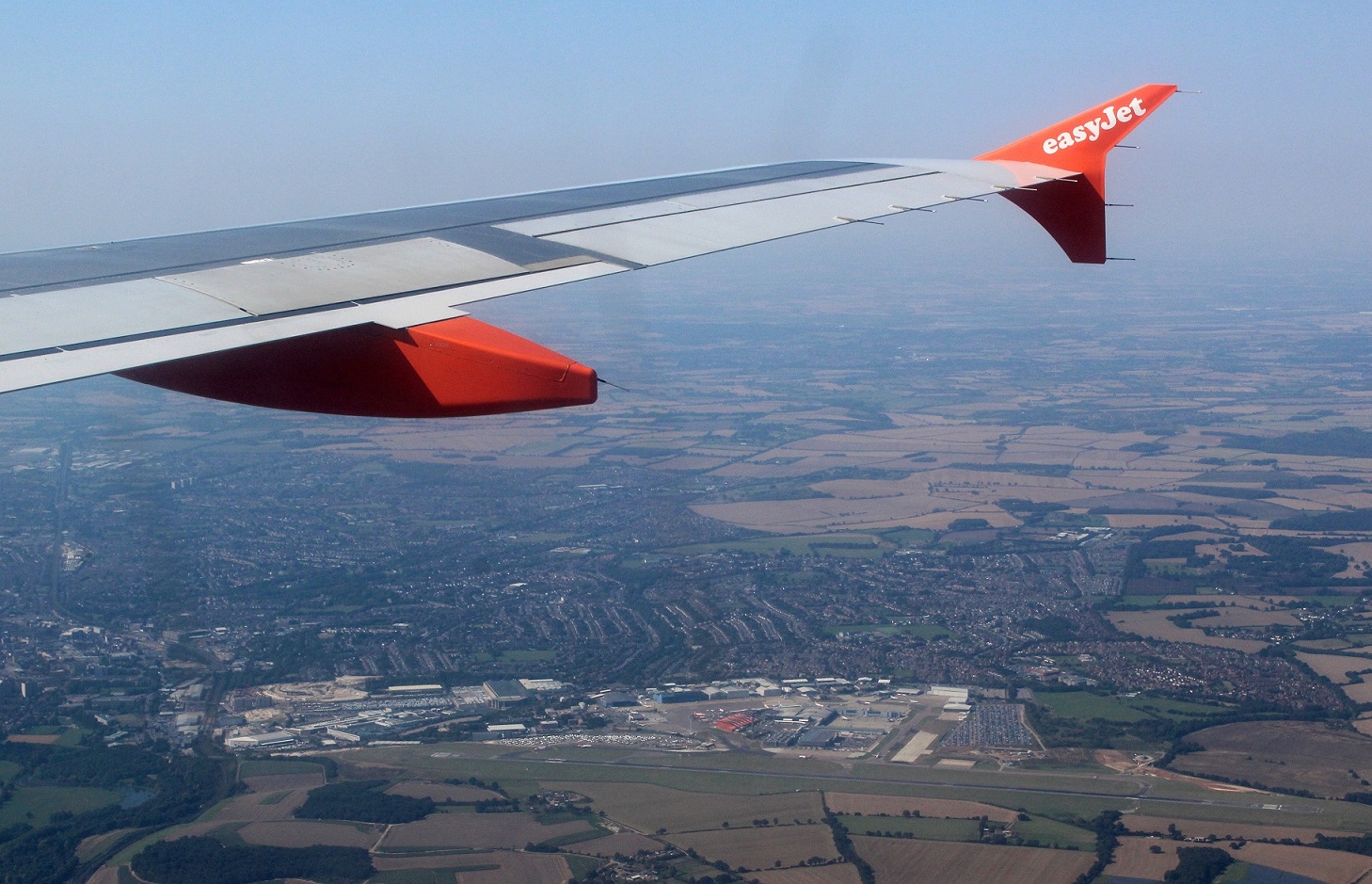Luton Airport
LUTON: Temporary aerodrome?
NOTES: Venue for Alan Cobham’s 1929 Municipal Aerodrome Campaign Tour
Venue for CD Barnard Air Tours tour of the UK in April 1931
Venue 13th April 1932 for Sir Alan Cobham’s National Aviation Day Tour
Was this the same site used as todays airport?
LUTON AIRPORT: Civil aerodrome, later regional airport, and emerging regional international airport from 1961 to become a major London regional international airport
Note: All these pictures were obtained from Google Earth ©
Note. Pictures by the author unless specified.
ICAO code: EGGW IATA code: LTN
Operated by:
1965: Luton Corporation
1990: Luton International Airport Ltd
2000: London Luton Airport Operations Ltd
Activities: Airline, air freight, charter, maintenance for GA to heavy types, GA business, private, training, helicopter business and training including military training during WW2
World War II: RAF Training Command 24 EFTS (1940 to 1942) Then ATA No.5 Ferry Pool, the only all female Pool
British airline users: Post 1945: Air 2000, Airtours International, Autair, Britannia Airways (previously Euravia), British Midland Airways, Caledonian Airways, Court Line (previously Autair), Dan-Air, Debonair Airways, Derby Airways*, Easyjet, Flybe, Inter City Airlines, Loganair, Manx Airlines, Monarch Airlines, Silverjet, Thomsonfly
Foreign airline users: Post 1945: Aer Arran, Bavaria Germanair, Condor Flugdienst, European Air Transport (Eurotrans), Fly Europe, Hapag Lloyd, LTE International Airlines, Maersk Air, Night Express (Executive), Ryanair, Scanair, Wizz Air
Air cargo: Post 1945: Afrek, Air Bridge Carriers, Aer Turas, Air Faisal, Air Foyle/TNT, Datapost, Eurafric, Geminair (Gemini Air Transport), Redcoat & SAS
Charter, air taxi: Post 1945: Aer Turas, Air Freight, Air Gregory, Alidair, Autair, Britannia Airways, British Midland Airways, British United Airways, Channel Airways, Eagle Airways, Euravia, Macedonian Aviation, Patrick-Duval Aviation, Sir Robert MacAlpine, Skyways
Flying schools and clubs: Pre 1940: Birkett Air Service
Post 1945: Eagle Flight Training, Luton Flying Club
Note: In the 1957 The Aeroplane directory, Luton Flying Club are listed as operating three Austers and two DH82A Tiger Moths.
Flying group: Post 1945: Britannia Flying Club
Helicopter ops: ?
Maintenance: Post 1945: Airline Engineering, Britannia
Manufacturing: Pre 1940: Percival Aircraft (From 1936)
WW2: D Napier & Son (Aero engines), Percival Aircraft
Post WW2: Percival later Hunting Percival
Location: 3nm E of junction 10 M.1), 2nm ESE of Luton town centre
Period of operation: Initially local aerodrome in the early 1930s, (possibly earlier?), with Percival arriving in 1932 according to some reports? Probably nonsense, because Percival set up at GRAVESEND in KENT in 1934! (see below)
Opened ‘officially’as a regional airport July 16th 1938 with expansion work starting in 1936
Runways: WW2/1950s grass airfield then grass airport (total area was about a third of the airport area today and located at the W end of the modern site)
1959: opening of the hard runway, then 1656 metres long
1965: 08/26 2012x46 hard N/S 1128x46 grass
1980: 08/26 2160x46 hard
Plus two grass runways: 17/35 700x20 and 06/24 400x20
Note: These maps are reproduced with the kind permission of Pooleys Flight Equipment Ltd. Copyright Robert Pooley 2014.
1990/2000: 08/26 2160x46 hard
NOTES: Birkett Air Service ran RAF No.29 Elementary and Reserve Flying Training School prior to 1939
During early WW2 Percival mainly produced their Proctors here but also built Airspeed Oxfords having moved here in 1936 from GRAVESEND in KENT. Reading various reports leads to a rather confusing situation. Some even say Percival moved here in 1932!
In late 1943 the No.5 ATA Pool moved to COSFORD to make way for Mosquito production.
A MIKE CHARLTON GALLERY
These lovely pictures from postcards were very kindly sent by Mike Charlton who has an amazing collection. See - www.aviationpostcard.co.uk
First picture: Clearly seen is the Percival factory, so taken after 1932. Has that aeroplane in the centre of the picture suffered an undercarriage collapse?
Second picture: What a lovely scene - so redolent of this era. The tail is almost certainly a Lockheed Constellation - rather than a Super Constellation? I suspect it is one of three Euravia Constellations. Can anybody kindly offer advice?
Third picture: Autair was originally Argus Air Transport formed at LUTON on 1957. It became Autair (Luton) in 1960 with a fleet of Douglas Dakotas and Vickers Vikings. Some if not all ex-BEA (British European Airways) - as was this Ambassador, the type entering service with Autair in 1963.
Fourth picture: It appears that Autair introduced their first Herald, their first turbo-prop, in 1963. Alongside their Airspeed Ambassadors. Note the two ex-BOAC Bristol Britannias of Britannia Airways beyond.
BRISTOL BRITANNIA'S GALORE - AND A BOEING 707
Fifth picture. In the foreground is the tail of G-ANBL, A Bristol 175 Britannia 102. It first served with BOAC (British Overseas Airways Corporation) from the 4th March 1956 until the 29th July 1970. It then went to Britannia Airways until the 20th Feburary 1973, when it went PWFU (Permanently Withdrawn From Use). It seems astonishing to me that operating an airliner of this size, for just two and a half years, could have been a profitable exercise?
But presumably it was, as Britannia Airways certainly prospered. Beyond is a Monarch Britannia taxying out, and behind another Britannia Airways example.
Sixth picture: Commencing as Euravia with three Lockheed Constellations, Britannia Airways was formed in 1964, operating ex BOAC Bristol Britannias, and by 1972 they were the largest charter operator in the UK. It appears they operated the Bristol Britannia until 1970.
Seventh picture: Monarch Airlines operations started in 1967, (and collapsed in 2017), and had a fleet of eight Bristol 175 Britannias from 1967 until 1976. This example G-AOVI is a Britannia 312 and served with BOAC (British Overseas Airways Corporation - or if you prefer - Boys Overseas After Crumpet) from the 12th February 1957 until the 15th February 1968. It then passed immediately to Monarch until the 26th of May 1972, when it was listed as "Destroyed". I can find no evidence of a crash so I wonder what's behind this?
Eighth picture. It appears that G-AYEX only served with Britannia Airways from the 18th October 1971 until the 16th of March 1973. So clearly it had had a more varied career. The more I delved into the history of this aeroplane the more incredible the story became, and I think it is well worth mentioning here. I trust you will agree.
It was built in 1967 and went to ExecJet Airlift in the USA as N525EJ. They leased it to Air Bahama from July 1968 until October 1969, when it went to World Airlift who then leased it to Caledonian - British United Aiways as G-AYEX from the 12th June 1970 until the 1st January 1971. As said above it then served with Britannia for a year and a half before going to British Caledonian Airways from the 16th March 1973 until the 28th December 1984. What I can't work out is if Britannia repainted it for this brief lease, or just painted over the previous lettering and tail badge.
Returning to USA it was registered once again as N525EJ and served with Saint Lucia Airways and then Keyway Air Transport. When it went to HCL Aviation and was re-registered as N707HL, and retained this registration when operated by E-Systems. All so well and good I suppose, and not that unusual a career for an ageing 707.
But here, to me at least, comes the bombshell. It is claimed that in January 1992 the USAF acquired it, and converted it into an EC-137E (64-19417) and operated it until 2002 when it was placed in storage. I found a picture of it on the inteweb taken in 2010 at the Davis-Monthan Air Force Base, Arizona, and fully cocooned. So, it could potentially, fly again!
THE JET ERA
Ninth picture: Dan-Air introduced the BAC One-Eleven in November 1974 to both replace its DH.106 Comet 4Bs and expand its jet routes around the UK and into Europe. They operated the, 200, 300 and 400 Series.
Eleventh picture: This picture can, I think, be reasonably accurately dated. Court Line emerged from Autair and had astonishing success, acquiring BAC One-Elevens in 1968. But it was all short lived, the airline collapsing in 1974. A Monarch Bristol Britannia can be seen beyond. I suspect the other Monarch aircraft is a Boeing 720B?
Twelth picture: The Boeing 737-204 G-AXNB entered service with Britannia Airways from the 29th August 1969. With the Court Line BAC One-Eleven beyond, and behind that a Monarch Bristol Britannia, it is quite probable that this picture was taken in the early 1970s.
THE START OF THE CHARTER FLIGHT ERA
In 1952 an Eagle Aviation Avro York departing from here making a record breaking back-to-back series of charter flights to Dusseldorf, Karachi, Aden, Khartoum, Kano, Dakar, Natal then onto Belaterra in Brazil. The aircraft then returned to Karachi and flew back to Belaterra once again. A ‘round’ trip of roughly thirty seven thousand miles or about one and a half times around the world! An astonishing achievement in my estimation - do you agree? Perhaps all the more so considering the communications facilities available at that time.
*Derby Airways commenced an inaugural flight to Jersey using Dakota G-APBC on the 10th September 1958. Quite why they decided to launch this service at the end of the holiday season has yet to be explained.
During the hey-day of foreign charter flights when it was cheaper for inclusive tours holidaymakers to come to LUTON from the Midlands and beyond, Court Line were operating high-capacity 400 seater Lockheed TriStars. Gawd only knows what it must have been like in the totally inadequate terminal building in those days.
THE COMET LANDS AT LUTON
In 1952, on the 27th February, ‘Cats-eyes’ Cunningham landed a Comet airliner here after finding Hatfield fog-bound. Was this the only occasion a Comet used a grass runway? An aerial picture I’ve seen taken in the early 50s and published by a Luton newspaper in 1963 clearly shows a Douglas DC-4 and Lockheed Constellation on the hard apron area, plus the control tower which I think was also built in the early 50s. Air Gregory, (based here), was the first UK company to introduce an executive jet service using a Hawker Siddely HS.125.
MANUFACTURING
Today it might easily be overlooked that Percival were a substantial aircraft design and manufacturing entity at this site. Indeed, the piston-engined Percival P.56 Provost was adopted as the ab initio trainer for the RAF from 1953 until the 1960s, before being replaced by their Jet Provost which, initially at least, was developed from the Provost airframe. Some 461 Provosts were produced, including armed versions for export. (See MANBY in LINCOLNSHIRE for more details).
The first prototype Jet Provost (XD674) first flew here on the 26th June 1954, in the year following the piston-engine Provost entering RAF service. The Jet Provost was developed over many years to become, arguably the ultimate version, the BAC Strikemaster. I can remember at a Farnborough Air Show in about 1978 pointing out the Brittan-Norman Islander to my wife and saying that this was a type we Brits should be investing in – and not the ‘massive sink-hole’ Concorde represented when it flew past. The Jet Provost was another case mostly ignored for government backing.
The export potential of the armed Jet Provost was, without much doubt, considerable, but was not backed at government level. As Rowland White explains in his book Storm Front: “Some had recognised the ground attack possibilities offered by the Jet Provost in 1958 when they sent one of the trainers to Aden for trials. Then in 1965 they’d despatched a small detachment of Jet Provosts to Indonesia to develop tactics for Army cooperation. But in the end, they couldn’t quite persuade themselves of the value of a small, simple, cheap, dedicated close air support jet while fixed on the ill-fated pursuit of technological marvels and big twin-engined beasts like the TSR.2 or F111, neither of which, in the end, ever actually entered RAF service either.”
There was of course a separate agenda at work here and I doubt the truth will ever be revealed. For example, where did the massive sums of money involved in progressing the failed the TSR.2 and F-111 projects eventually end up? And, having been developed to near operational status, the TSR.2 was arguably the most formidable weapon the western powers possessed in the ‘Cold War’ at that time. So, who in their right mind, would cancel such a project? Unless of course it was realised that the ‘Cold War’ was nothing more, on both sides, than an excuse for squandering yet more resources on futile military projects. Which was how it turned out.
THE INCLUSIVE TOUR BUSINESS
In 1969 Britannia Airways became the first British operator for the Boeing 737 type and only the second in Europe - Lufthansa was the first. In 1972 Britannia Airways were the first British inclusive tour operator to operate charter flights to Moscow and they also still operate (?) their own flying club sometimes utilising their light aircraft in ‘fetch & carry’ support duties for their airline operations
A look at the various airliner types using LUTON in the period 1984 to 1985 is I think very interesting reading. Firstly it well illustrates the overlap between the first generations of jet and turboprop airliners being phased out and the later types, many of which are still operating today in various developed versions. Secondly I’m astonished by the sheer variety of types using this airport in those days. The 15,505 movements being divided as follows:
Total No. of movements Aircraft types
2 each: Lockheed L1011 TriStar, Boeing 707
3 each: Airbus A300B, BAe (Avro-Hawker Siddely) 748
4: Fokker F.28
5 each: Douglas DC-10, BAe (Hawker Siddely) Trident
6: Airbus A310
13: Douglas DC-8
18: Convair CV990
48: Tupolev Tu-154
51: Boeing 720/720B
68: Boeing 727
218: BAC (Vickers) Viscount
323: Fokker F.27
358: Boeing 757
503: Aerospatiale (Sud-Aviation) Caravelle
557: Douglas DC-9
889: Boeing 767
2833: BAe (BAC) 1-11
9596: Boeing 737
Similarly the 971 movements by air-freighter types shows another interesting picture.
1: BAe (Armstrong-Whitworth/Hawker Siddely) Argosy
2: Bristol Britannia
3: Lockheed Hercules
6: Shorts SC5 Belfast
10: Handley Page Herald
17: Bristol 170 Freighter
20: Boeing 707
27: BAe (Avro – Hawker Siddely) 748
182: Canadair CL-44
323: Fokker F27
380: BAe (Vickers) Merchantman
Looking at records in the reference section in Luton library I was intrigued by the way General Aviation movements were recorded, some 30,090 for this period. Although including helicopter movements I was surprised to see several types I certainly wouldn’t regard as being GA aircraft. For example, the Douglas DC-3, Embraer Bandierante and Shorts 330/360.
PERSONAL NOTES
In April 1997 when out for the day visiting a couple of local airfields from Wycombe Air Park, we sat on the ground at HALTON wondering what to do next and I had the bright idea of ringing ATC at LUTON to see if we could visit? "Not a problem at all" we were informed. This was a very short flight logging just twenty five minutes 'chock-to-chock'. Established on long finals ATC asked if we could make a low level circuit to allow a jet airliner to depart, a request to which we readily agreed as it added interest to our flight.
Once on the ground and taking the first available taxiway, we found a 'Follow Me' van waiting to escort us to our parking spot. Needless to say we expected some pretty hefty fees, but no, it was all very reasonable. The 'Follow Me' van took us to the terminal to book in and after a quick cuppa we were ready to depart; and once again we were collected and taken to our aircraft, the Cessna 172 G-WACL. After requesting engine start we were escorted to the runway and got away promptly with a low level turn out to clear the way for an incoming airliner. We were delighted with such smooth, friendly and very professional ATC. Would this be possible today? Perhaps not as the airport is much busier?
On another tack I have used Luton several times as a passenger on both business and holiday in the last fifteen or so years. Perhaps I've been lucky, (there havebeen some dire stories circulating), but on each and every occassion the terminal facilities have worked really quite smoothly. (See my notes below).
PICTURE GALLERY
A PICTURE GALLERY BY THE AUTHOR (August 2019)
Having shunned LUTON for many years, when car parking charges suddenly 'went through the roof'', an easyJet flight to Toulouse admirably suited our purposes, and we found a reasonable off-airport parking facility nearby. But, with the on-going expansion of the airport, it could only be described as an utter nightmare.
By this time my wife was disabled, and, it has to be said the facilities were first class. If we were both still in fine fettle, we'd now avoid LUTON like the plague. No doubt, commercially it is a great success, but from the view of most passengers at busy periods, quite frankly a disaster. It made HEATHROW, our nearest airport, seem to be an oasis of tranquillity by comparison.
Second picture: This Ryanair 737 is E1-DHR, a Boeing 737-8AS.
Fourth picture: In the foreground is the Wizzair Airbus A320-232 G-WUKB.
NOTE: If anybody can kindly explain the history about the Boeing 737 front fuselage, and its use, this will be most welcome.
Angel-Berry
This comment was written on: 2015-07-27 22:53:06You should write an atricle on EasyJet at Luton and perhaps a section about the TV show come fly with me.
Reply from Dick Flute:
Thank you for the suggestion, but I am far too busy adding stuff to this website. I have used Easy-jet many times from Luton and have to say that it was always a very satisfactory experience. On time, every time, and much better than flying with other operators using this airport. Best regards, Dick
bill mccartney
This comment was written on: 2018-12-27 09:26:35Please conform which year (1968/70) the plane plane crashed into Vauxhall on Xmas Eve
Colin Charman
This comment was written on: 2020-10-27 13:48:24We used to cycle up to the airport in about 1960-1963 when it was a grass strip. Never been an aircraft buff, but I think it was mainly tiger moths A few years later I joined Vauxhall Motors shortly before the apprentice training school moved from "W Block" up to the airport offices that were previously (I think) part of the Percival factory. We were called up there in 1968, half-expecting for all of us to be laid off, but they announced that our pay was almost doubled. I well remember lorry-loads of aircraft seats coming along Kimpton Road when it was rumoured that a large airliner had been diverted in, and couldnt take off without reducing weight. May be an urban myth! Later on GM chartered a double-engine square body-shape thing (a Fokker?) that flew the Luton-Russelsheim-Antwerp triangle every day. We used it like a bus service. And yes, I remember that a light aircraft crashed into the roof of buildings on the south side of Kimpton Road, near where the assembly line went over a bridge over the road. It may have been the van assembly line.
We'd love to hear from you, so please scroll down to leave a comment!
Leave a comment ...
Copyright (c) UK Airfield Guide















